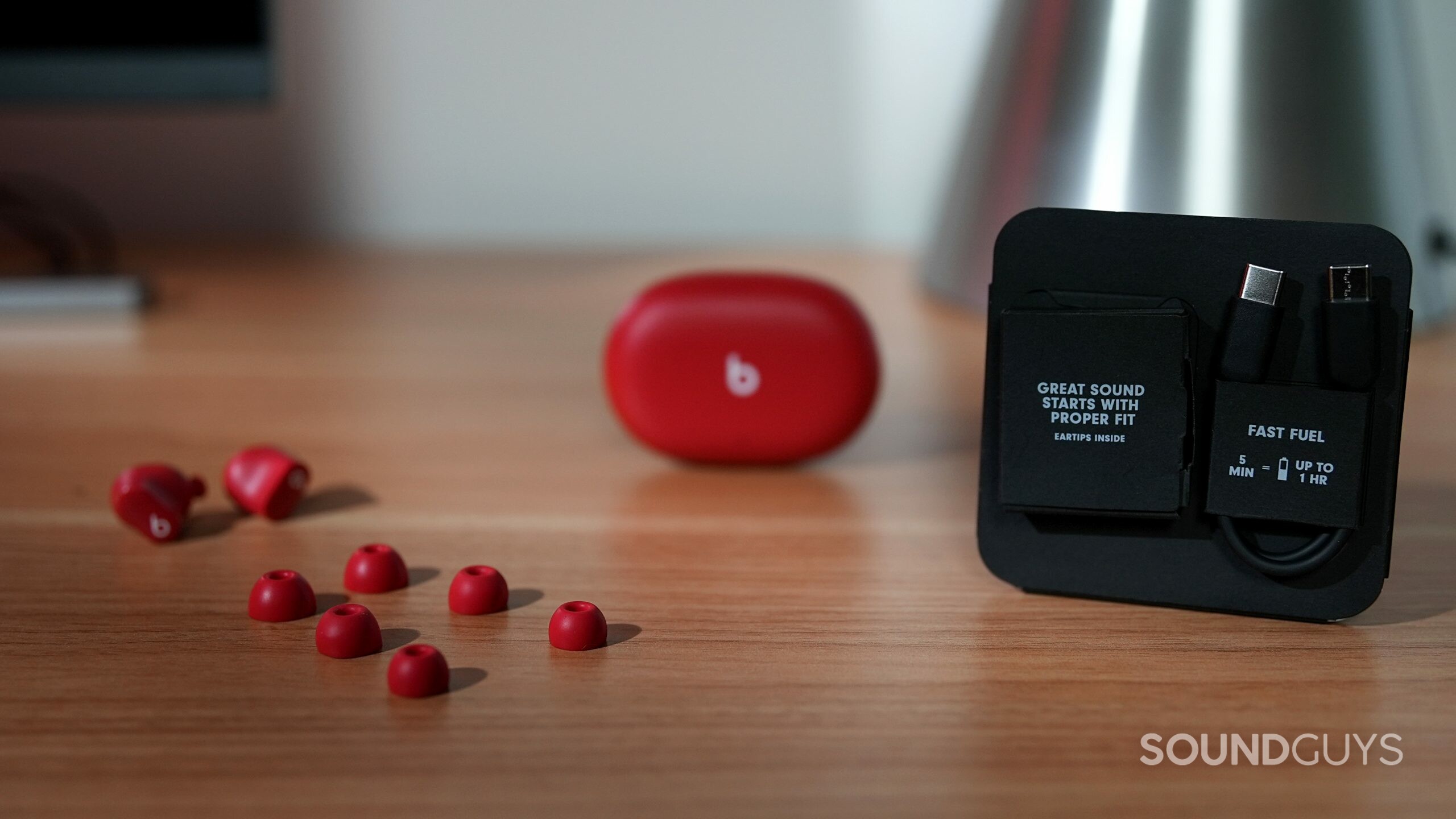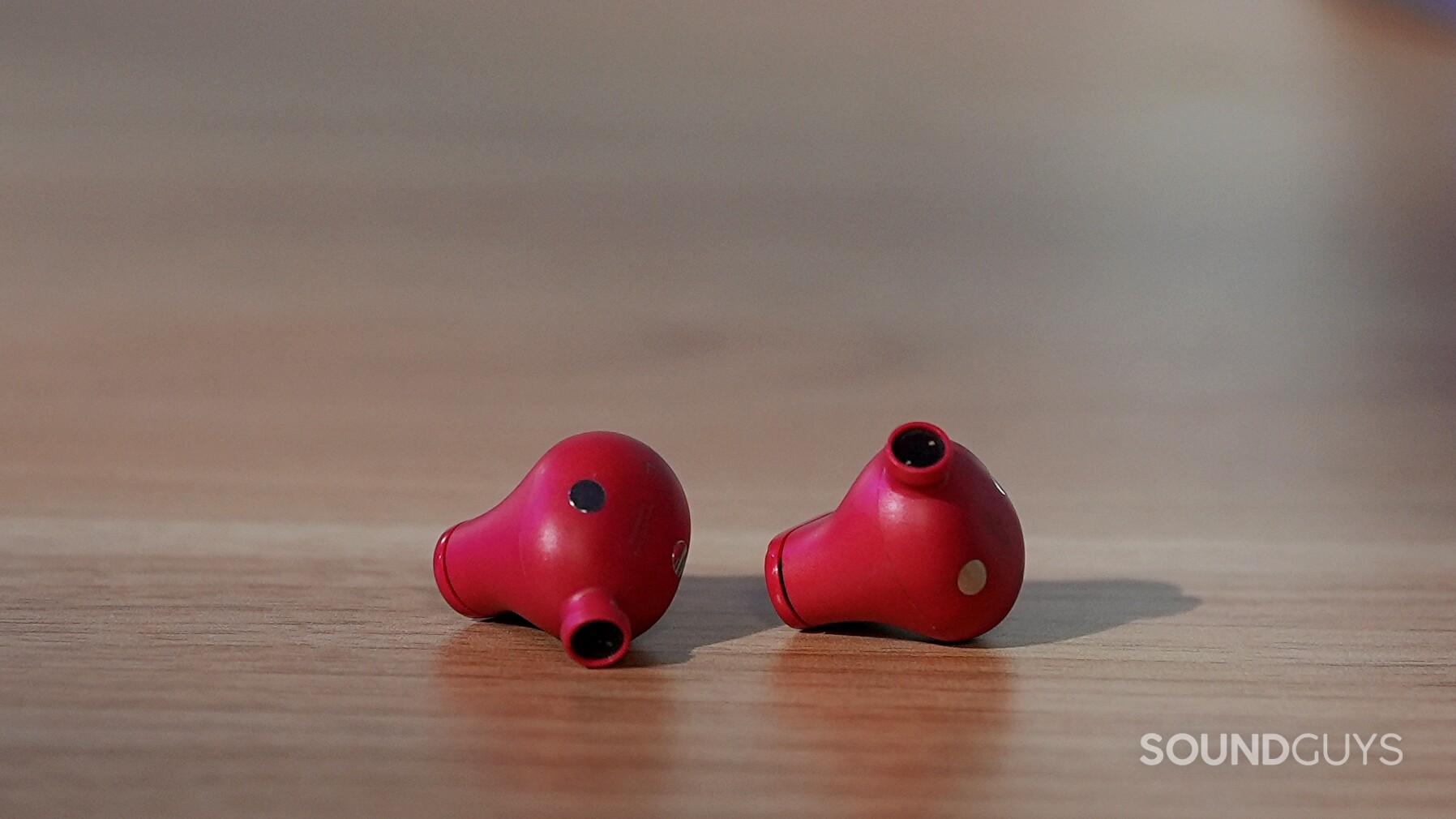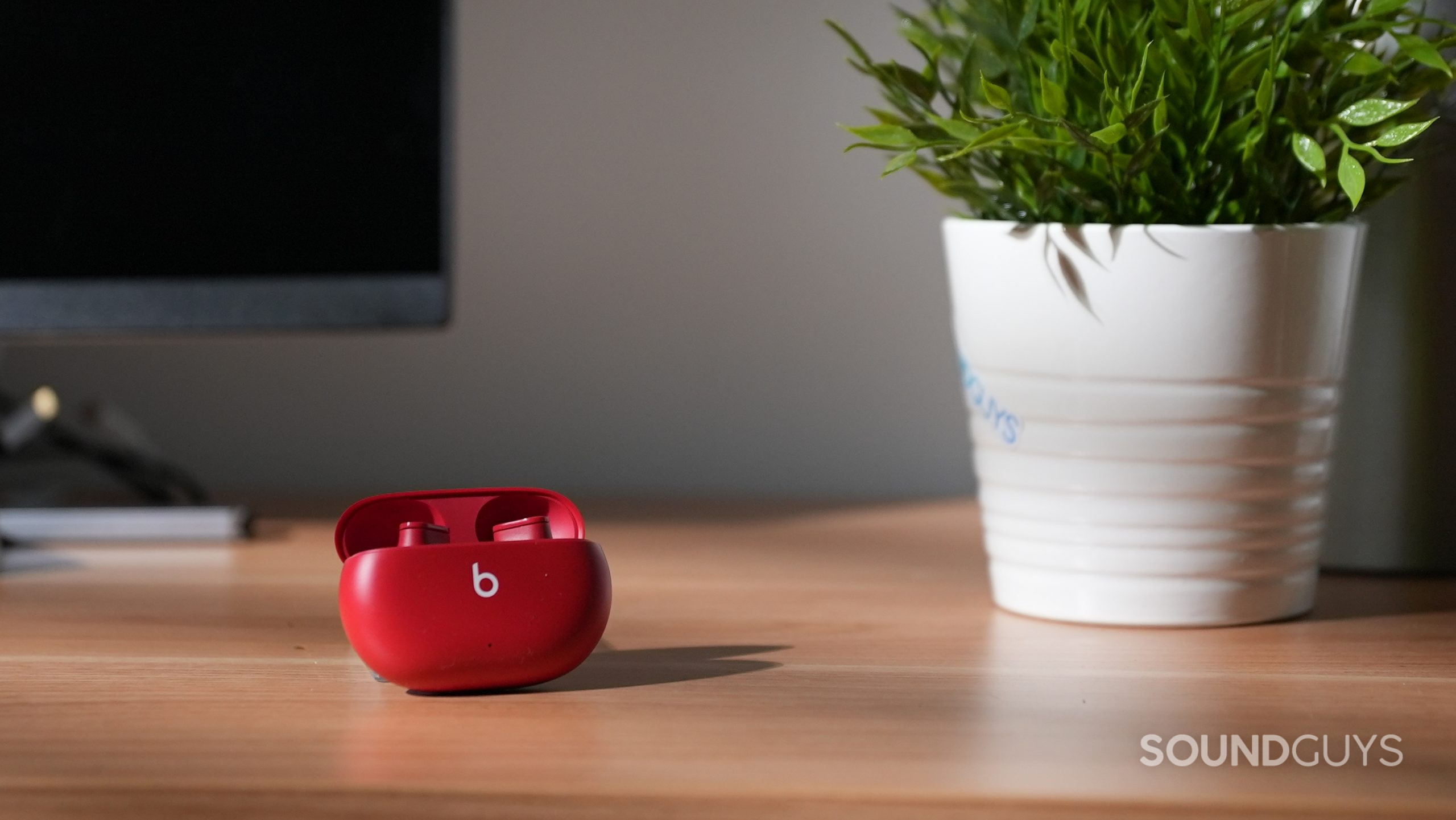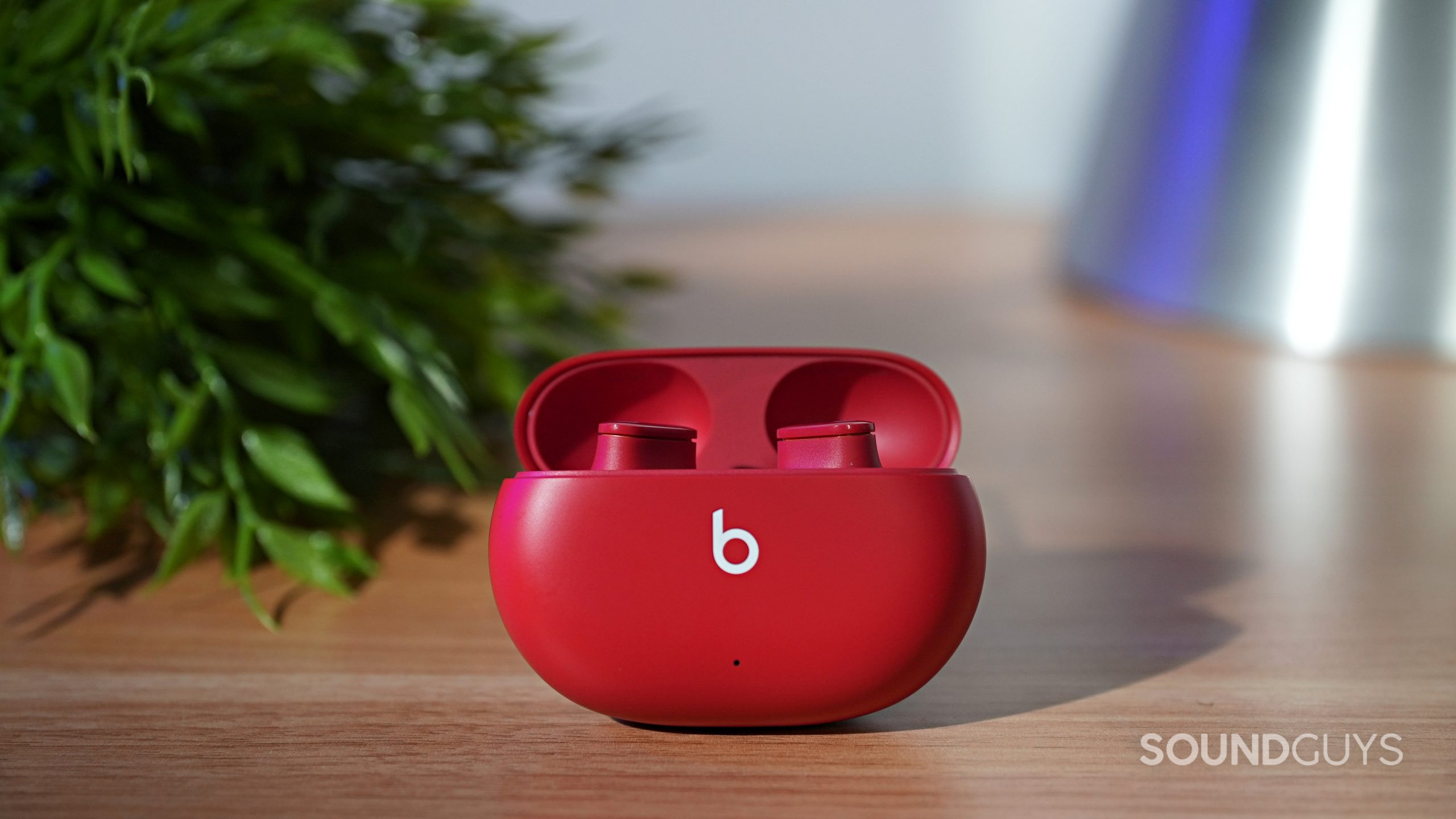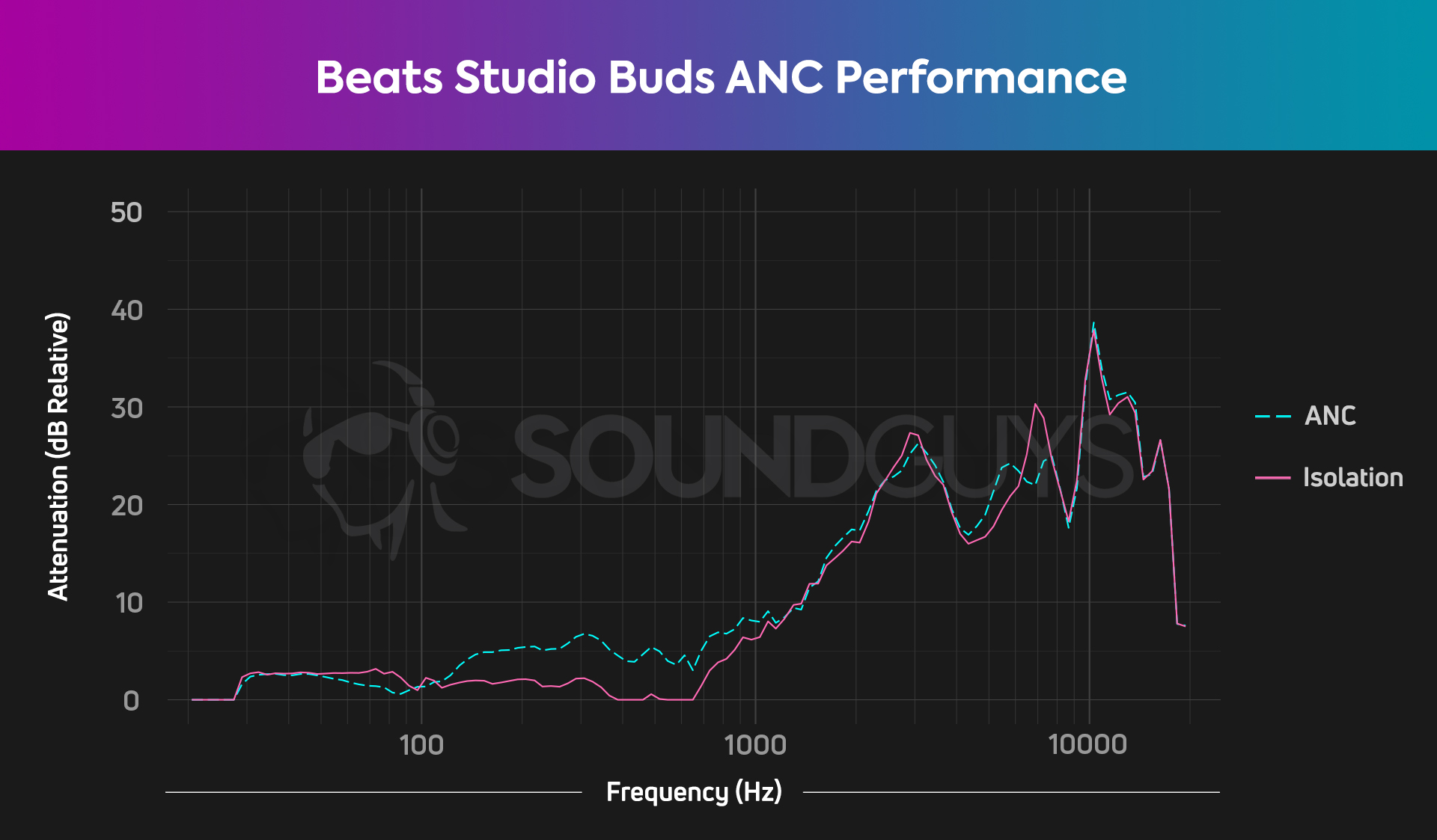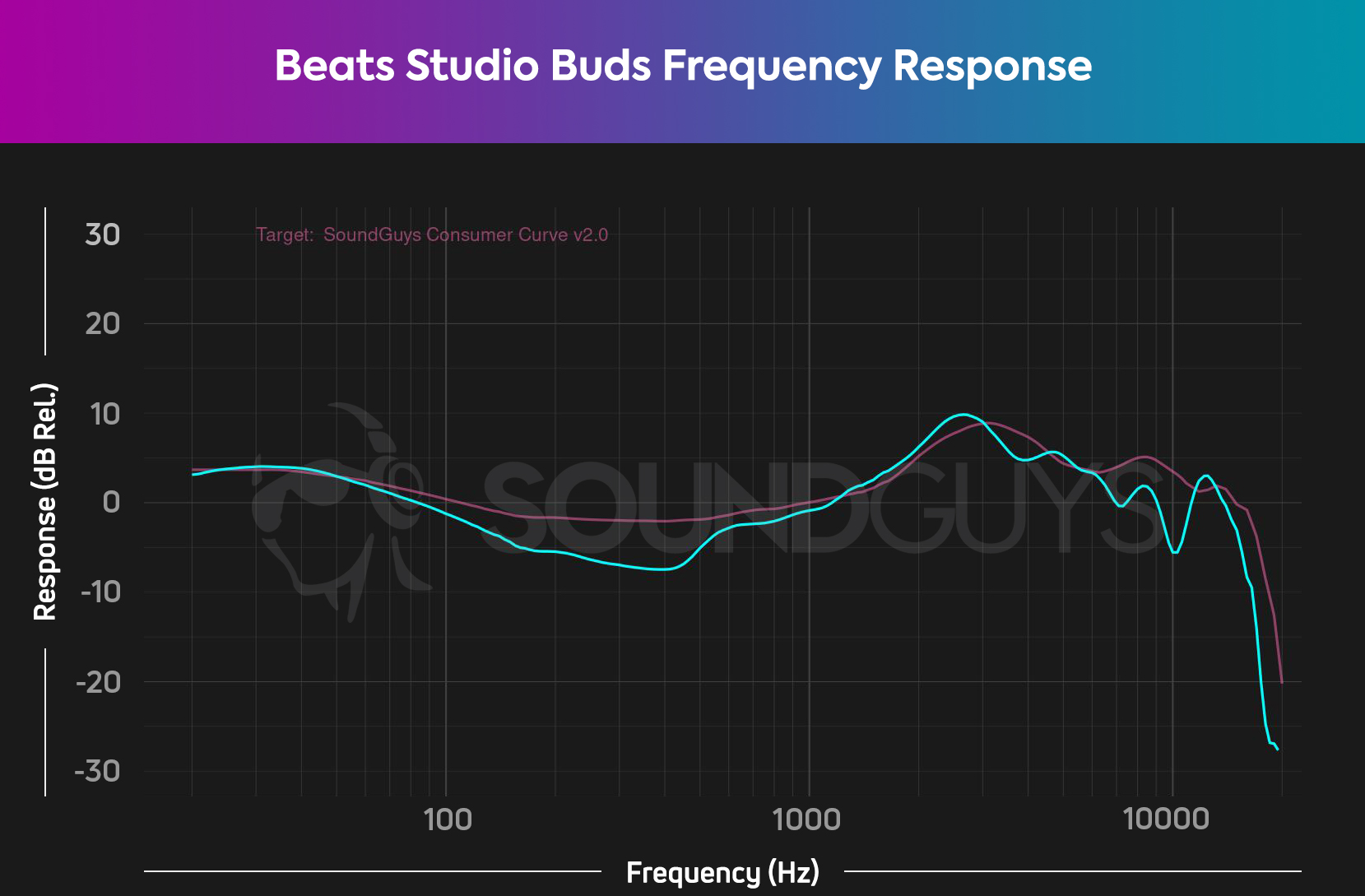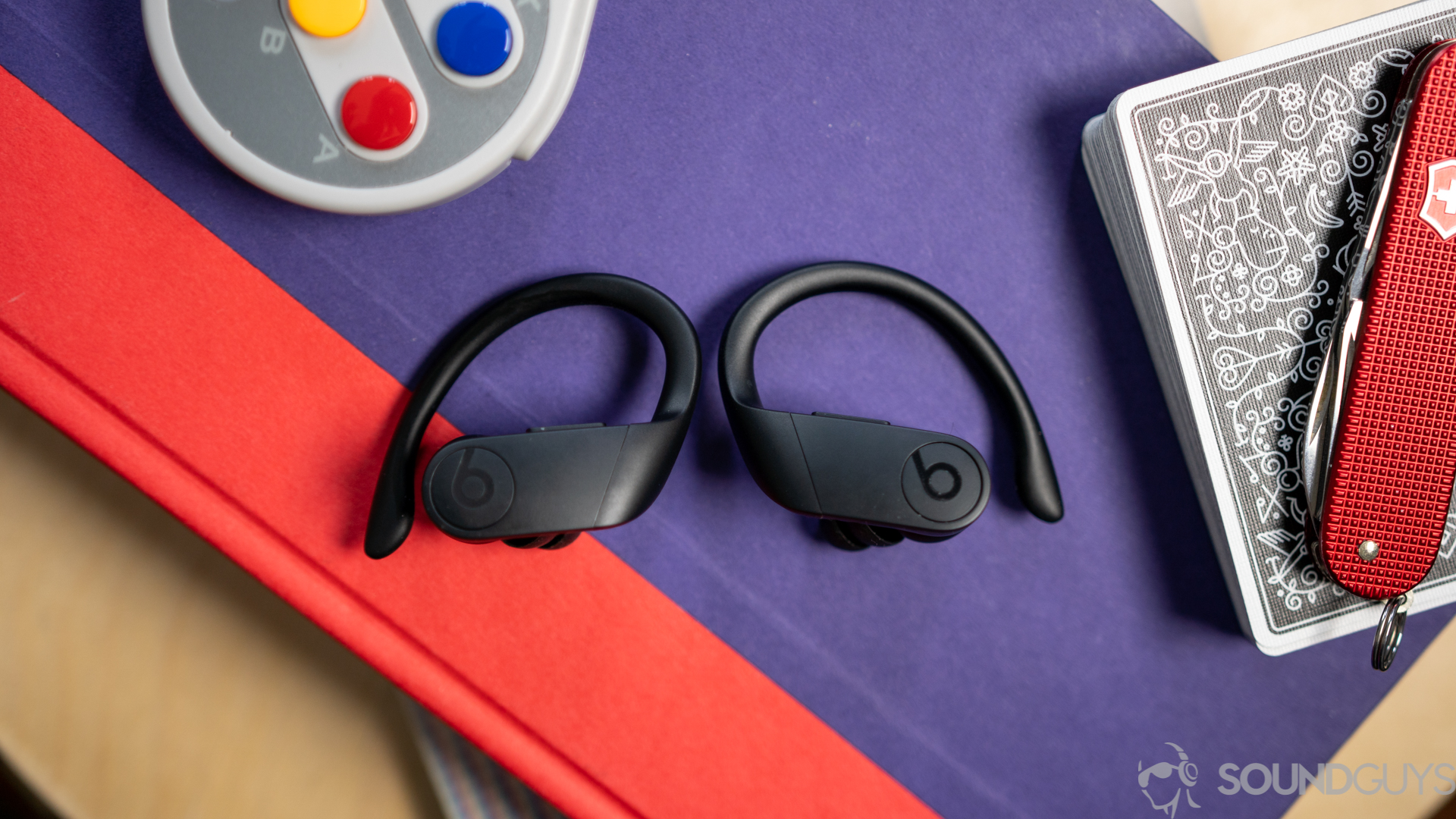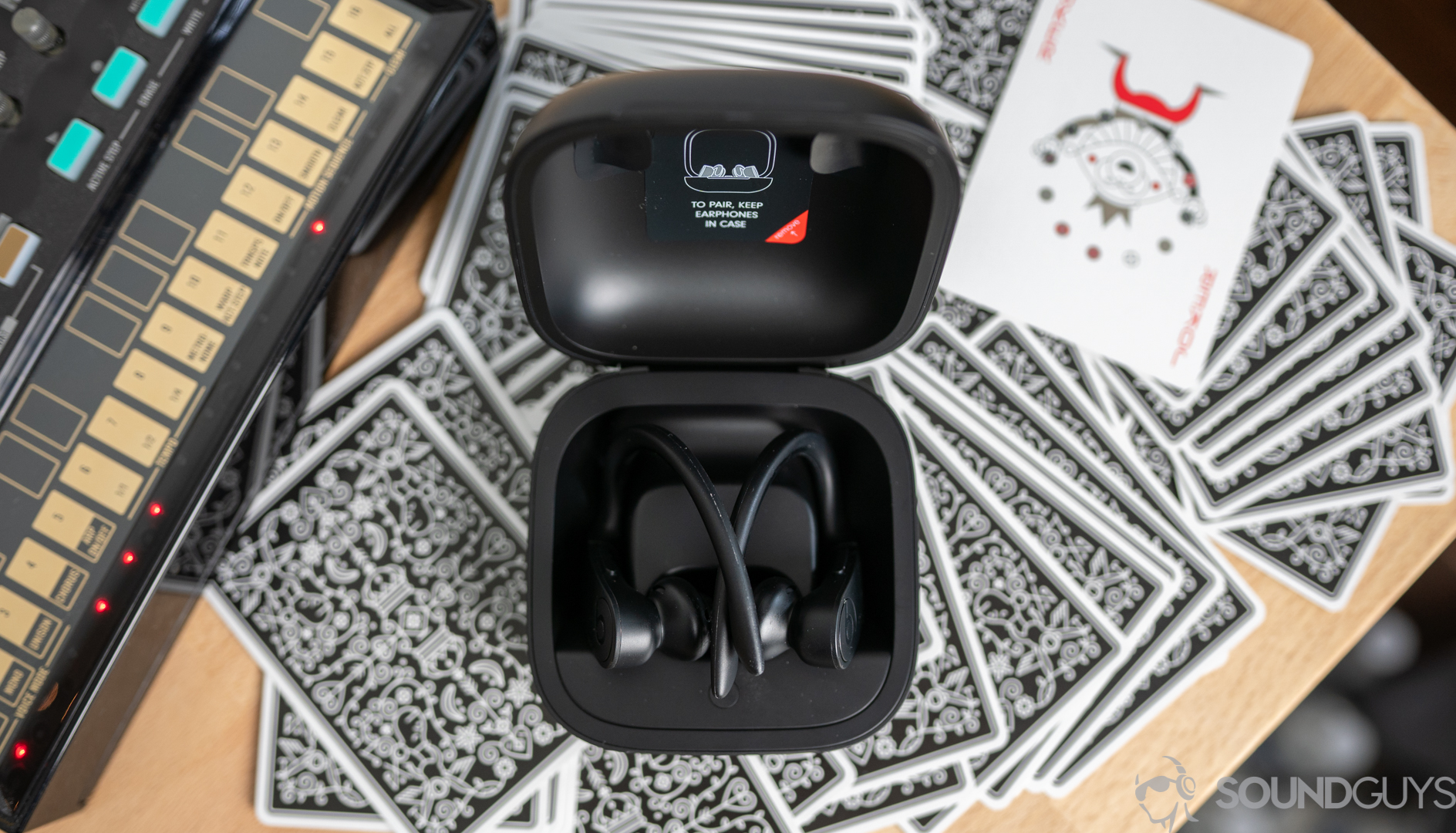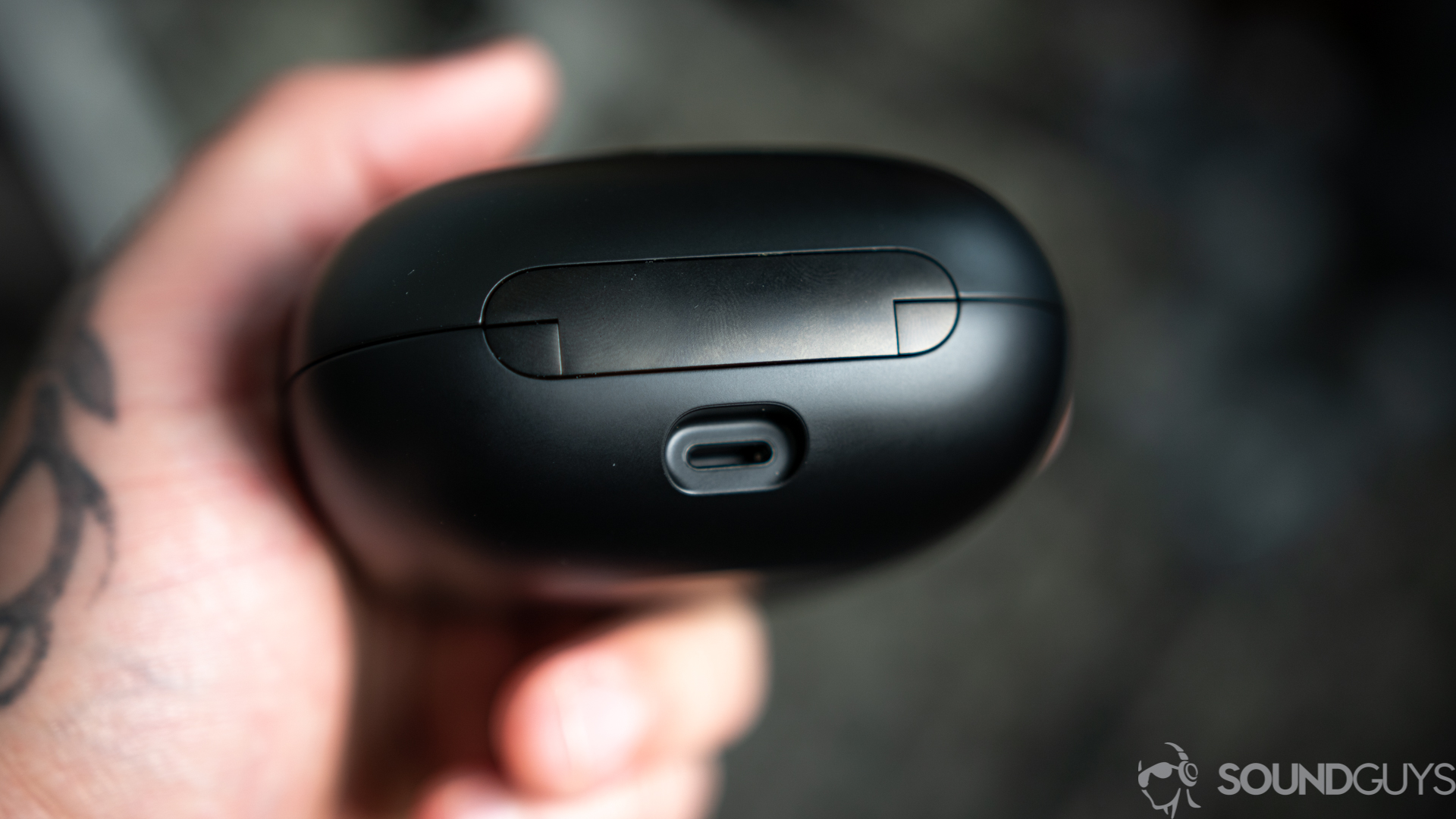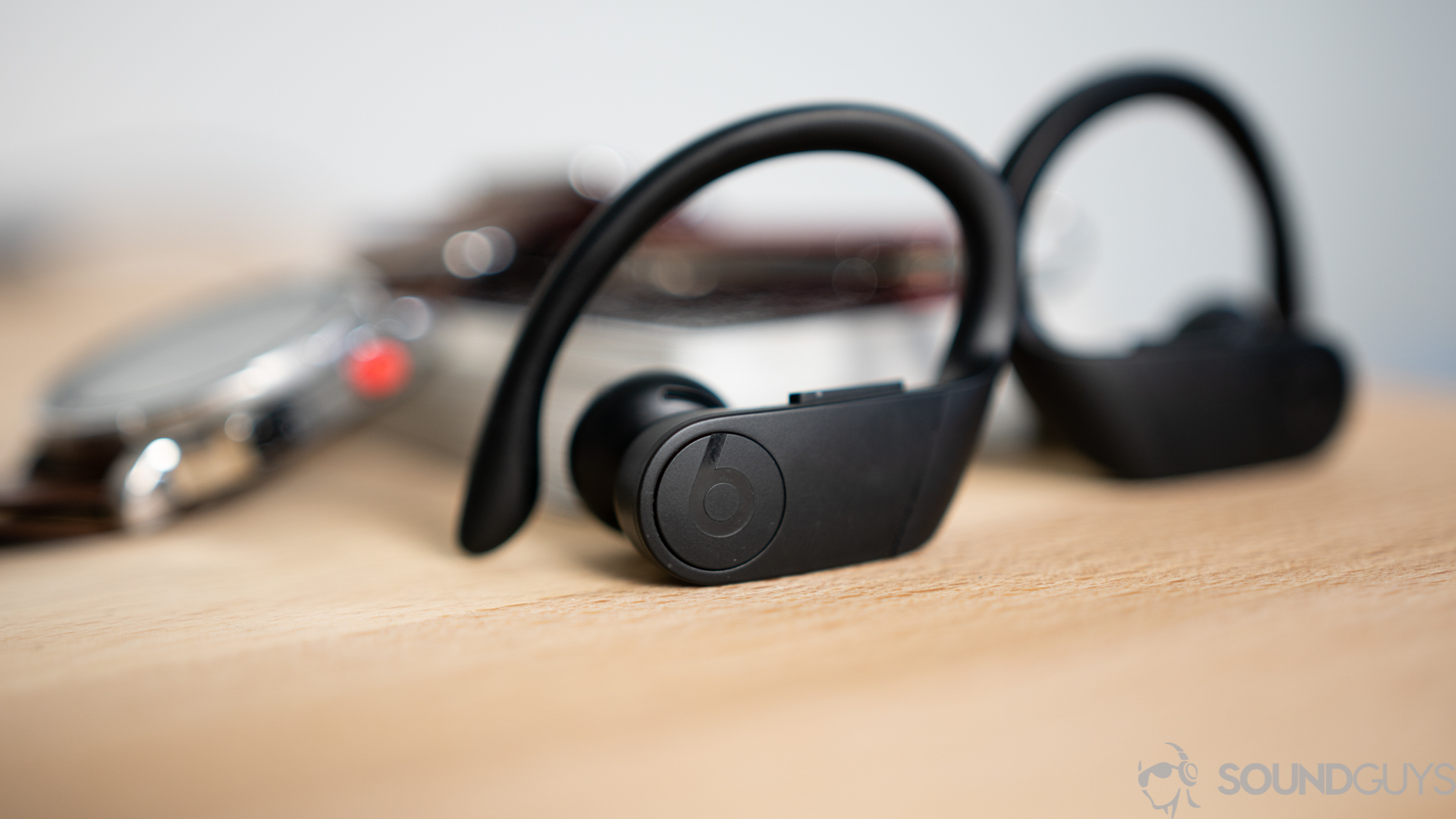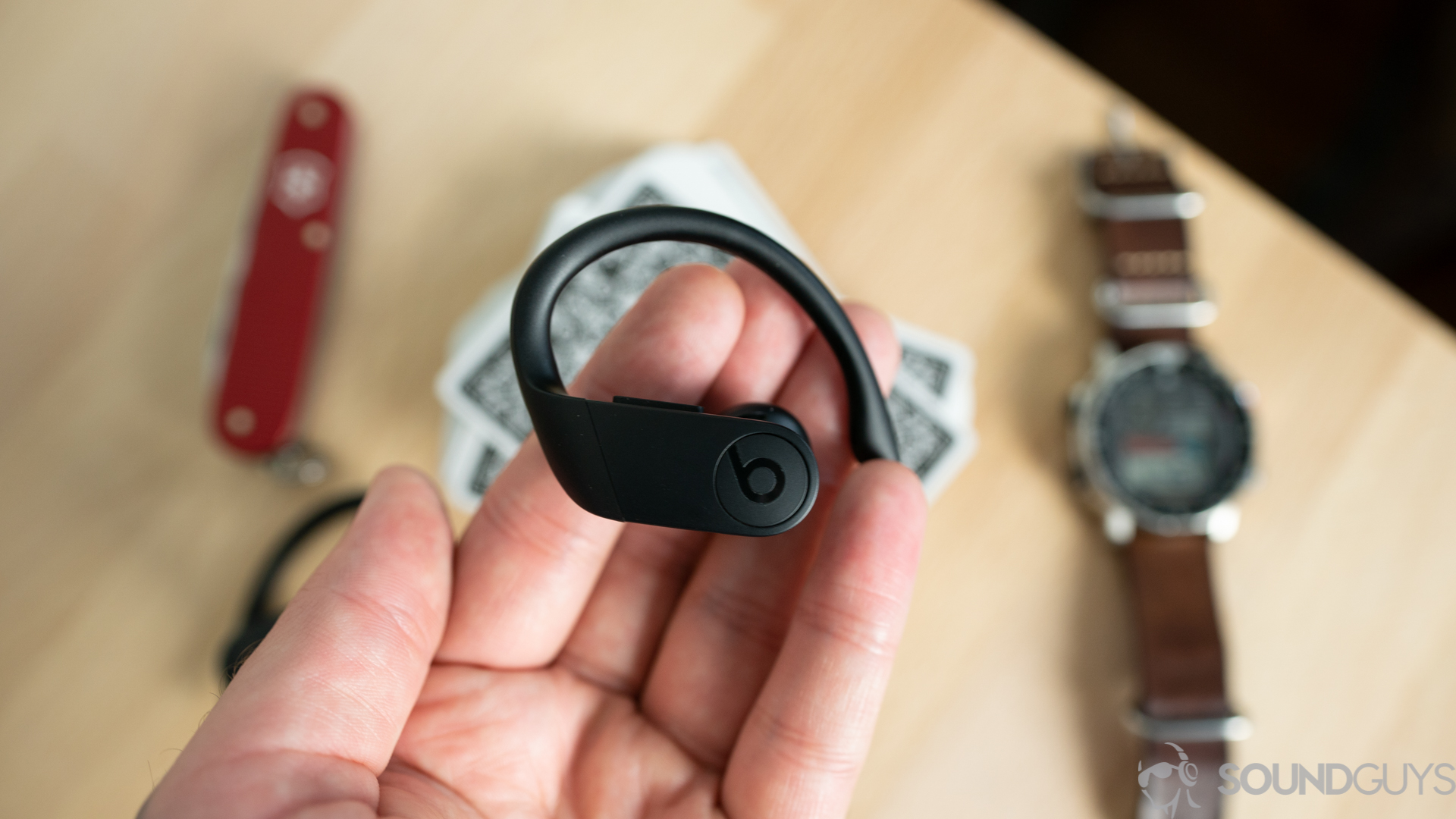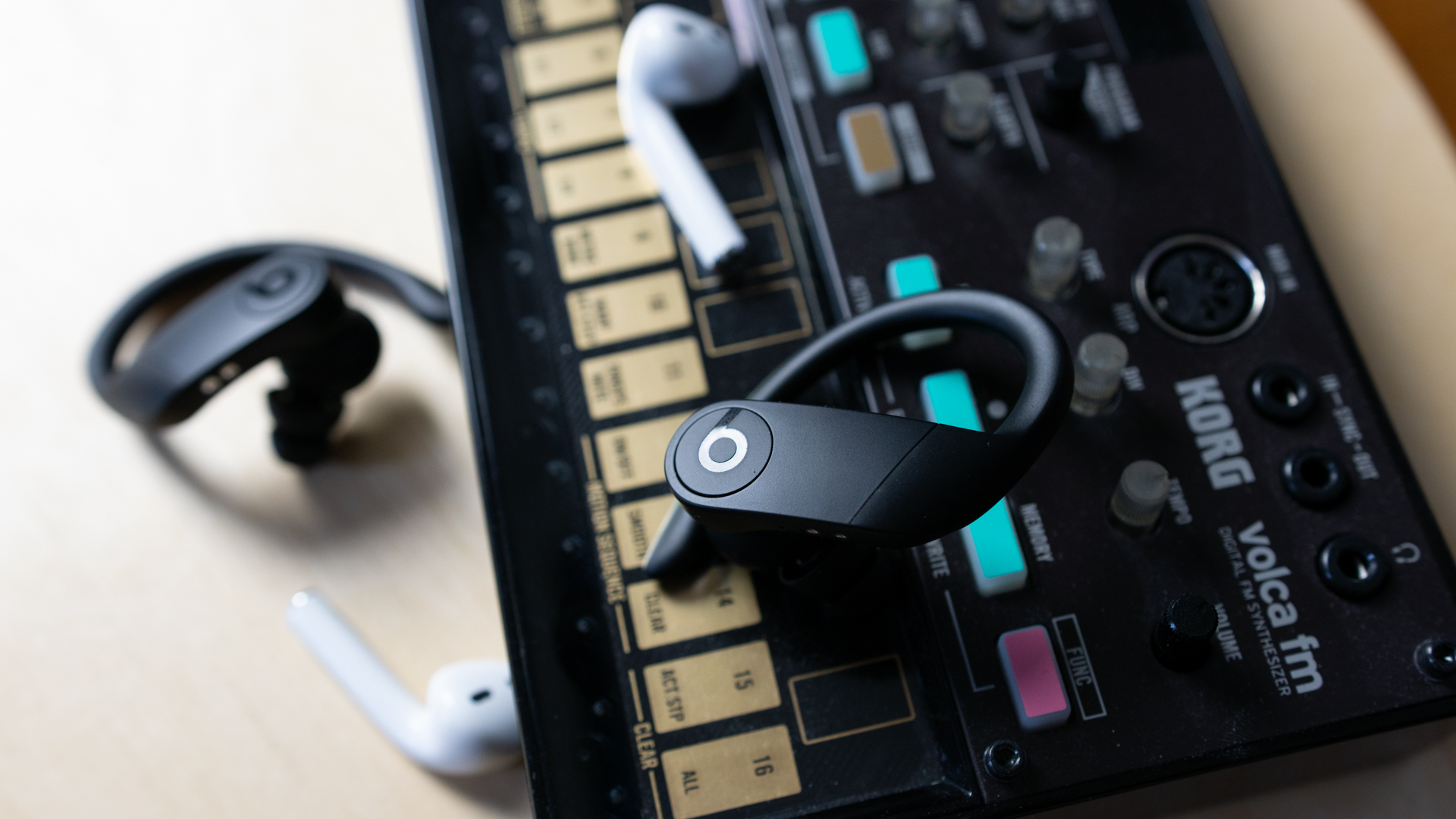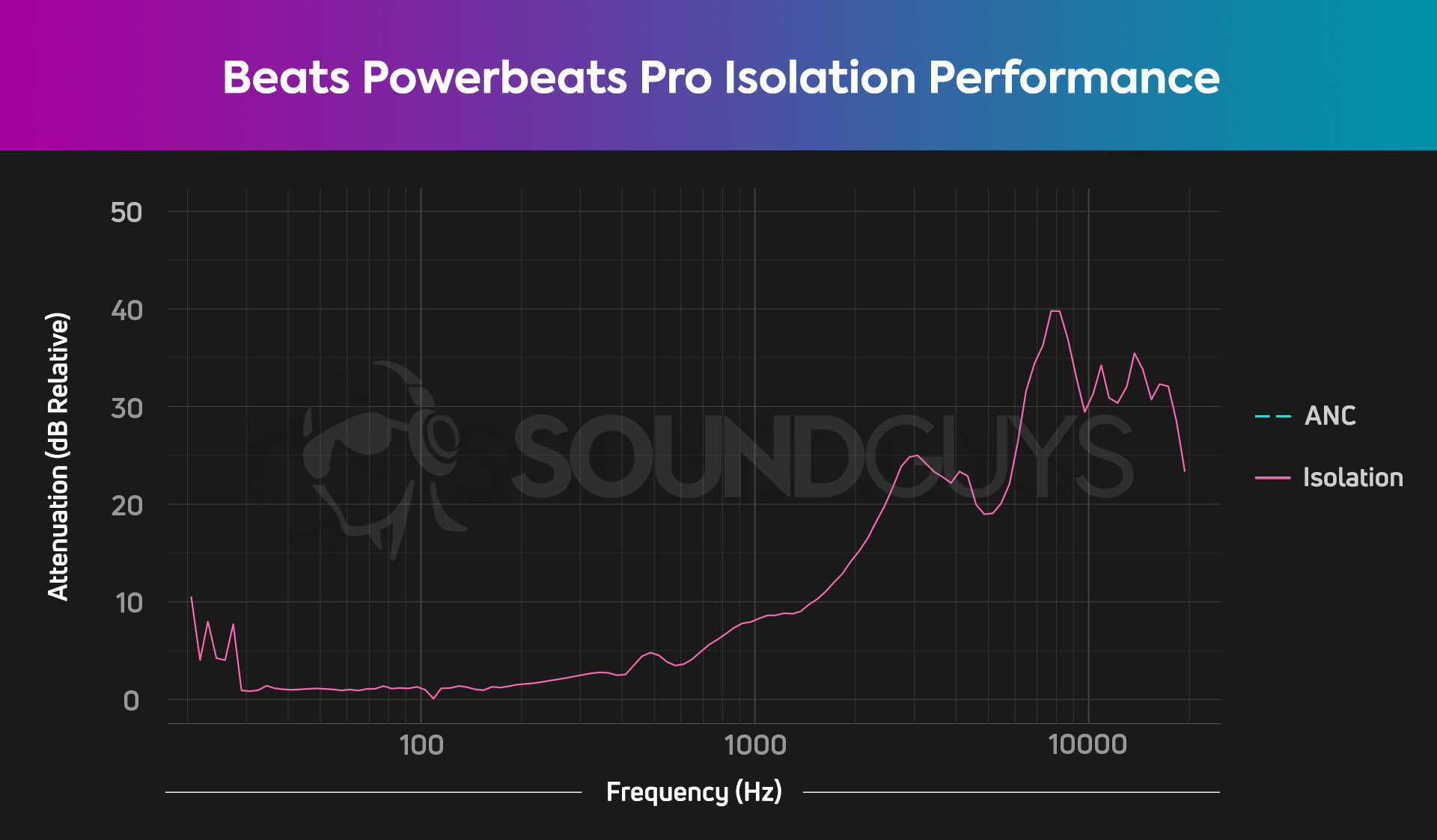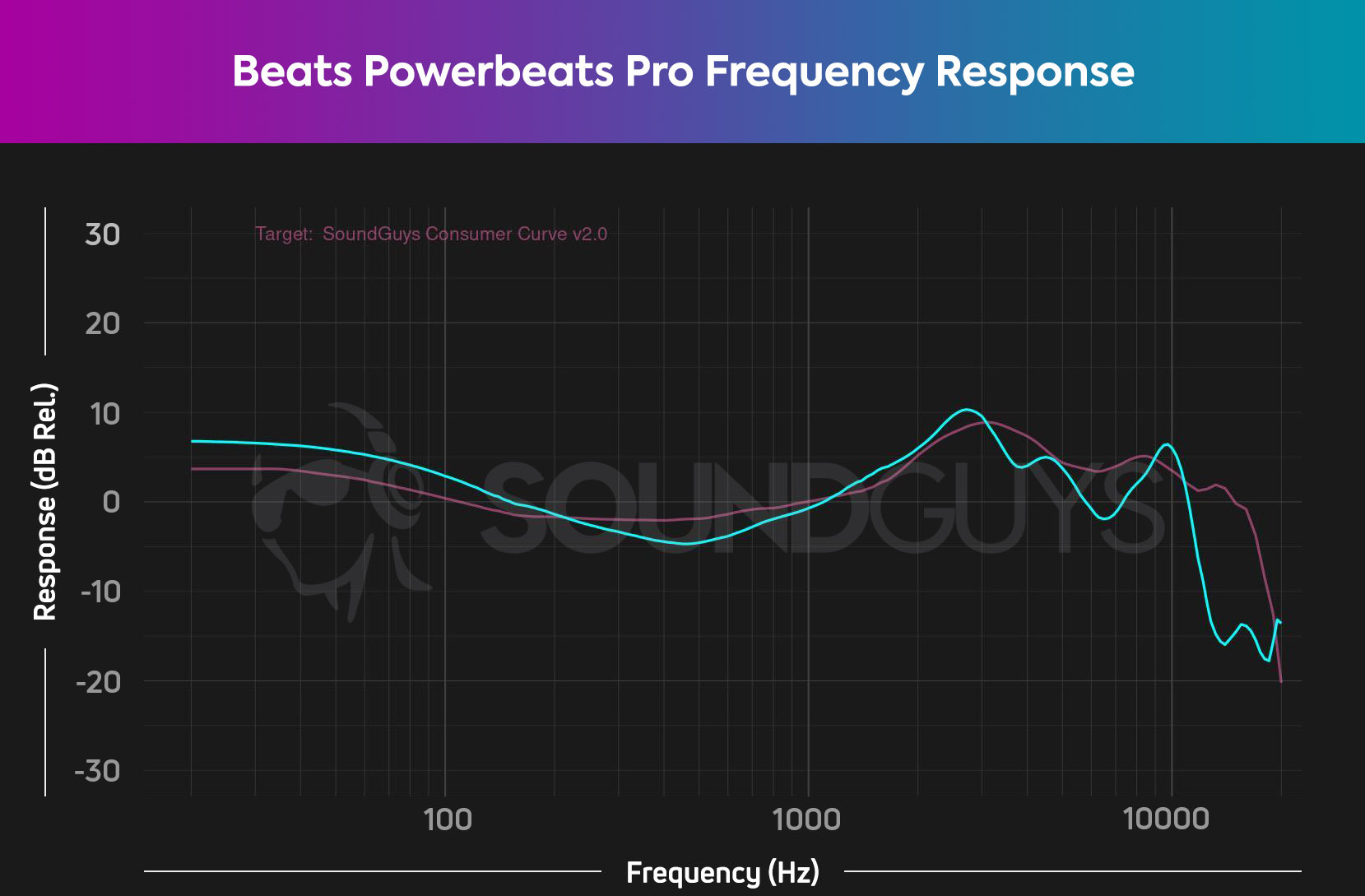Affiliate links on SoundGuys may earn us a commission. Learn more.
Best Beats headphones
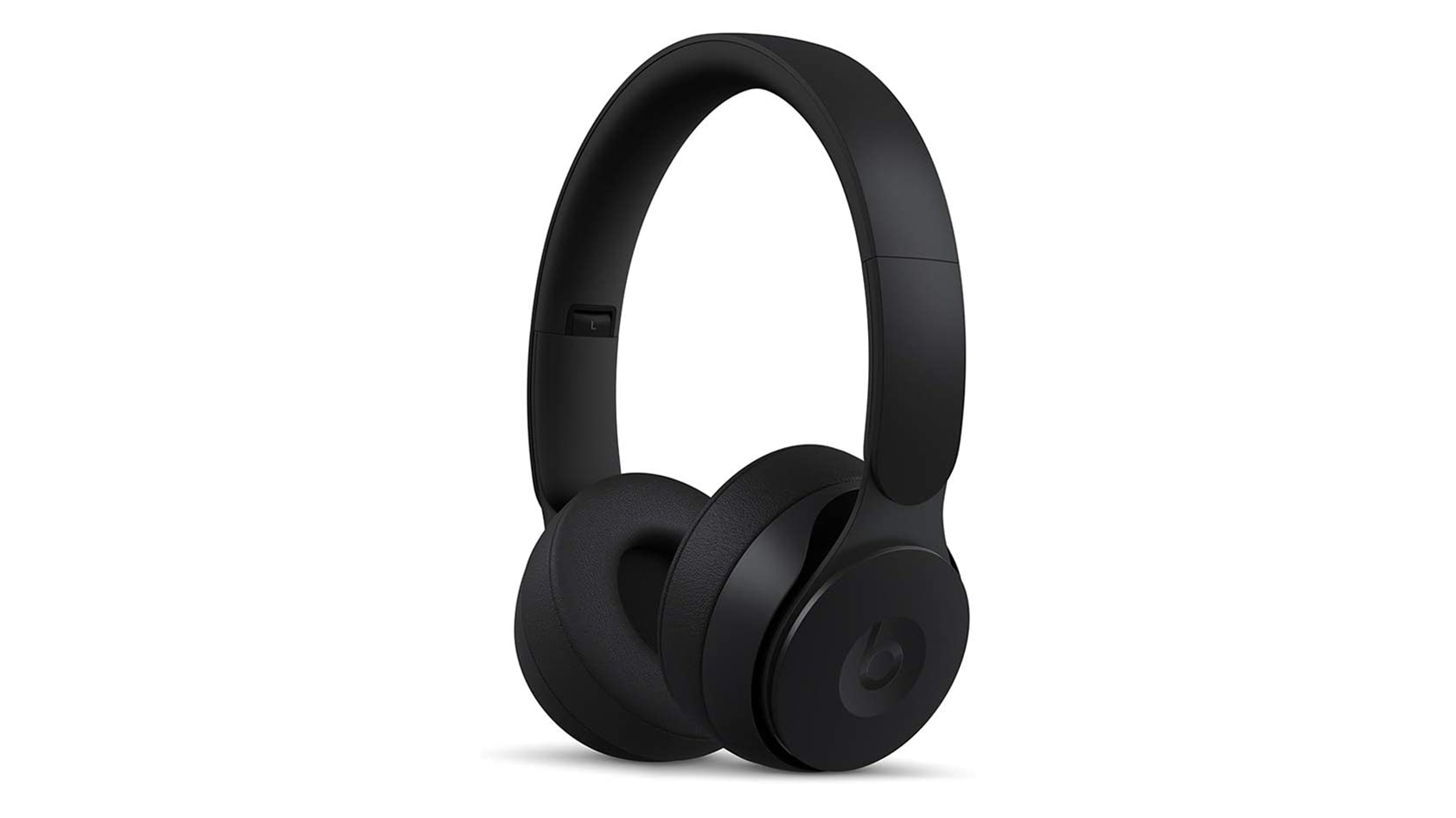
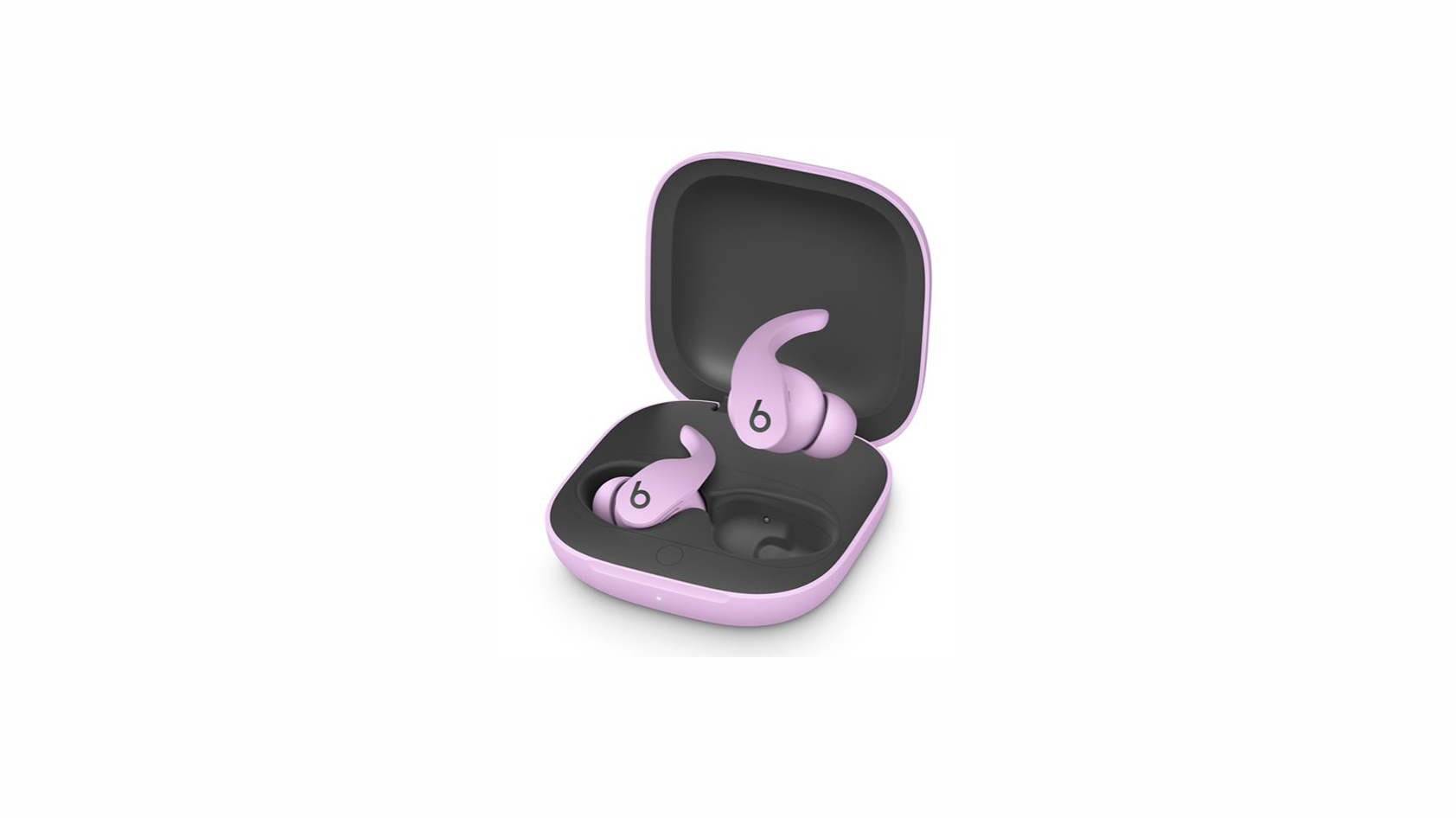
![Beats Studio3 Wireless[whitebackground] The Beats Studio3 Wireless headphones in black against a white background.](https://www.soundguys.com/wp-content/uploads/2018/10/Beats-Studio3-Wirelesswhitebackground.jpg)
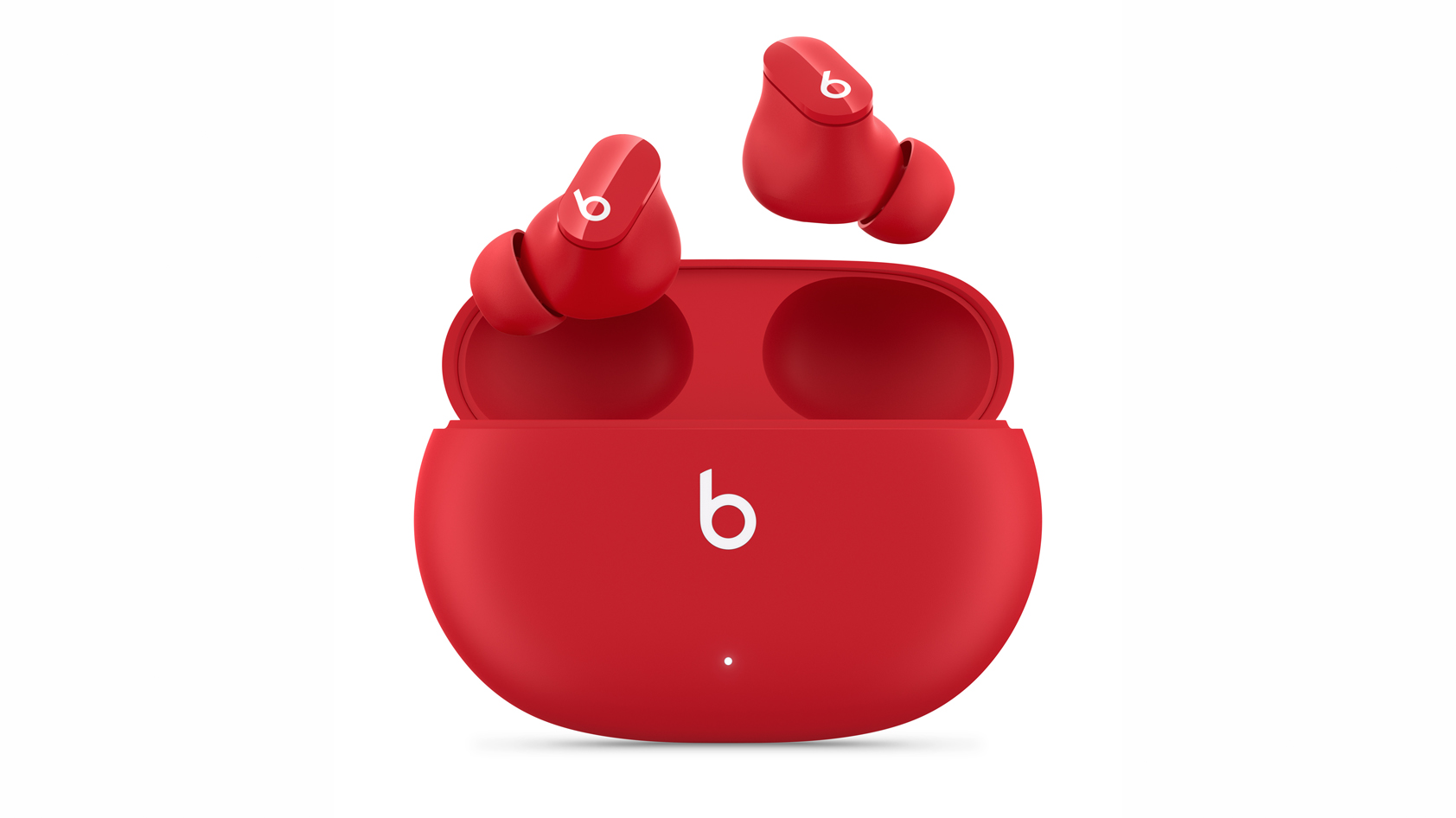
![Beats Powerbeats Pro[white background] Beats Powerbeats Pro product image on white background.](https://www.soundguys.com/wp-content/uploads/2019/05/Beats-Powerbeats-Prowhite-background.jpg)
Despite the high price of Beats headphones, the company has released some of the most successful audio products of all time. Regardless of how many complaints or negative reviews that various Beats headsets receive, they continue to fly off the shelves. So why fight it? We’re here to explore some of the best Beats headphones you can get. Luckily for us, there aren’t too many options currently available.
Editor’s note: this list was updated on February 7, 2023 to update formatting.
The Beats Solo3 Wireless is the best Beats headphones
The Solo3 Wireless has been around for a few years, but it still delivers and for not a lot of money. While the Apple W1 chip onboard the Solo3 doesn’t perform as efficiently as the H1 chip, you still get a stable AAC connection and fast pairing. Its on-ear design may be a polarizing choice, but it keeps the lightweight and plasticky headset portable.
Beats retains the headphone jack on the Solo3 for optimal audio quality. Running it wirelessly the battery in the Solo3 provides a very respectable 45 hours and 8 minutes of listening. In a pinch, it only takes five minutes of charging to get three hours of playback. Annoyingly, it uses the outdated microUSB cable, but you can’t argue with three hours of audio.
The frequency response is emphatically Beats-esque with significant under-emphasis in the highs, and a somewhat neutral reproduction of mids, and a boost in the lows. In other words, you don’t get what we’d call an ideal curve, but if you want Beats you probably want the sound of the Solo3.
If you just want to listen to music, this gets you there. The microphone is not great at all, so don’t use it for Zoom calls, but for the classic Beats sound for not a lot of money, try the Solo3. Alternatively, if you can track down the discontinued Beats Solo Pro, it’s worth considering as well for its active noise canceling (ANC).

We can’t recommend this microphone. The speaker’s voice is muffled, there’s low-end attenuation, and it only records through one channel.
Beats Solo3 Wireless microphone demo (Non-standardized):
How do these sound to you?
The Beats Fit Pro has the latest Apple technology
Are you looking to pair your Apple device with Beats style and sound? Equipped with the H1 chip and spatial audio (basically surround sound) courtesy of Apple, the Fit Pro has you in mind. Android users can access some of the features of this set of Beats as well, signaling that Beats may increasingly cater to Apple and Android users.
On board you get ANC, just like the AirPods Pro, with small wing tips to lock in your fit. From photos we’ve seen it appears that a lot of people don’t know where the “wings” are meant to go, so follow instructions to get the most out of your fit. Alongside with wings you get a sweatproof IPX4 rating. Like the AirPods Pro, you get three different ear tips and hands-free access to Siri. Unlike Apple, you also get to choose between four different colorways, in true Beats fashion.

In quiet settings, the microphone sounds OK. While it does suppress steady background noise to some degree, it introduces a static sound and leads to voices sounding muffled. Irregular background noise is not suppressed at all.
Beats Fit Pro microphone demo (Ideal conditions):
Beats Fit Pro microphone demo (Office conditions):
Beats Fit Pro microphone demo (Windy conditions):
How does the microphone sound to you?
If you want active noise canceling, go with the Beats Studio3 Wireless
For those of you who are always on the go, there’s really only one pair of Beats headphones for you and that’s the Studio3 Wireless. As the name suggests, the Studio3 Wireless is one of many wireless Beats headphones, but you can also connect it by wire to your phone.
All of the playback controls can be found in the multifunction “b” button on the left ear cup. With a series of taps and holds, you can control everything from volume to playback. Hate it or love it, these are another pair that offers the classic Beats sound with a heavy emphasis on lower notes.

You have the choice between the integrated microphone or the in-line mic that comes with the audio cable. The former not only sounds muffled when background noise comes into play, it also suffers from distortions, which can make your voice hard to understand.
Beats Studio3 Wireless microphone demo (Ideal conditions):
Beats Studio3 Wireless microphone demo (Wind conditions):
Beats Studio3 Wireless microphone demo (Street conditions):
Beats Studio3 Wireless microphone demo (Office conditions):
Beats Studio3 Wireless microphone demo (Reverberant space conditions):
[aa poll ids=“82722”]
For Android, get the Beats Studio Buds
Ditching the Apple H1 and W1 chips, the Beats Studio Buds true wireless earphones aims for Android users more than other Beats. It uses USB-C to charge, rather than lightning. This means you don’t have to carry a lightning cable around if you’re not in the Apple ecosystem.
Beats Studio Buds has noise canceling that can quiet low frequencies about 25%. ANC is a battery drain so you get a pretty average 4 hours, 24 minutes of battery life. You don’t get any EQ options, however, those who don’t love the exaggerated emphasis on bass, which masks other frequencies can rejoice: Studio Buds has a reasonable amount of bass.
At 5 grams the lightweight Studio Buds remain as discrete or statement-worthy as you want, depending on the colorway. If you have an iPhone you won’t get niceties like spatial audio or the seamless switching between Apple devices. Android users get the usual AAC and SBC options for connectivity. So it’s a bit like if you’re on Android you don’t have to pay more for features you can’t use, not that Beats is providing you with anything extra.
The Beats Studio Buds is a solid alternative to the Apple AirPods Pro, and Beats’ earbuds provide a more stable, comfortable fit.

The microphone quality performs well enough, though background noise may cause your voice to sound muffled.
Beats Studio Buds microphone demo (Ideal conditions):
Beats Studio Buds microphone demo (Office conditions):
Beats Studio Buds microphone demo (Street conditions):
Beats Studio Buds microphone demo (Windy conditions):
How does the microphone sound to you?
Get the Beats Powerbeats Pro instead of the new AirPods
The Beats Powerbeats Pro is everything the AirPods isn’t: it has distinguished nozzles that seal to the ear canal for a better fit and improved sound quality. You benefit from Apple’s H1 chip, which facilitates hands-free access to Siri and improves battery life. With a hair under 11 hours of playback, the battery life of the Beats Powerbeats Pro absolutely dwarfs that of every other true wireless headset. It’s not even close.
The ear hook design is comfortable and keeps these Beats headphones stable during workouts. You’re going to want a good pair of earbuds for your athletic endeavors as music improves most athletes’ performances. You’ll never have to worry about skips as connection quality is consistent. Again, this reliability is thanks to the H1 chip and Bluetooth 5.0 support. The IPX4 rating certifies the earbuds can withstand any sweat flung at them—just don’t submerge them.
You may find that it’s hard to decide between the Beats Powerbeats Pro and the Apple AirPods Pro (1st generation). The former has great battery life and microphones, while the latter is much more portable, has DSP-corrected sound, spatial audio, adaptive EQ, and active noise canceling.

The surprisingly good microphone performs well under windy conditions, though a high-pitched voice in a noisy environment can sound less natural.
Beats Powerbeats Pro microphone demo (Ideal conditions):
Beats Powerbeats Pro microphone demo (Windy conditions):
Beats Powerbeats Pro microphone demo (Office conditions):
How do these sound to you?
What about the Beats Powerbeats?
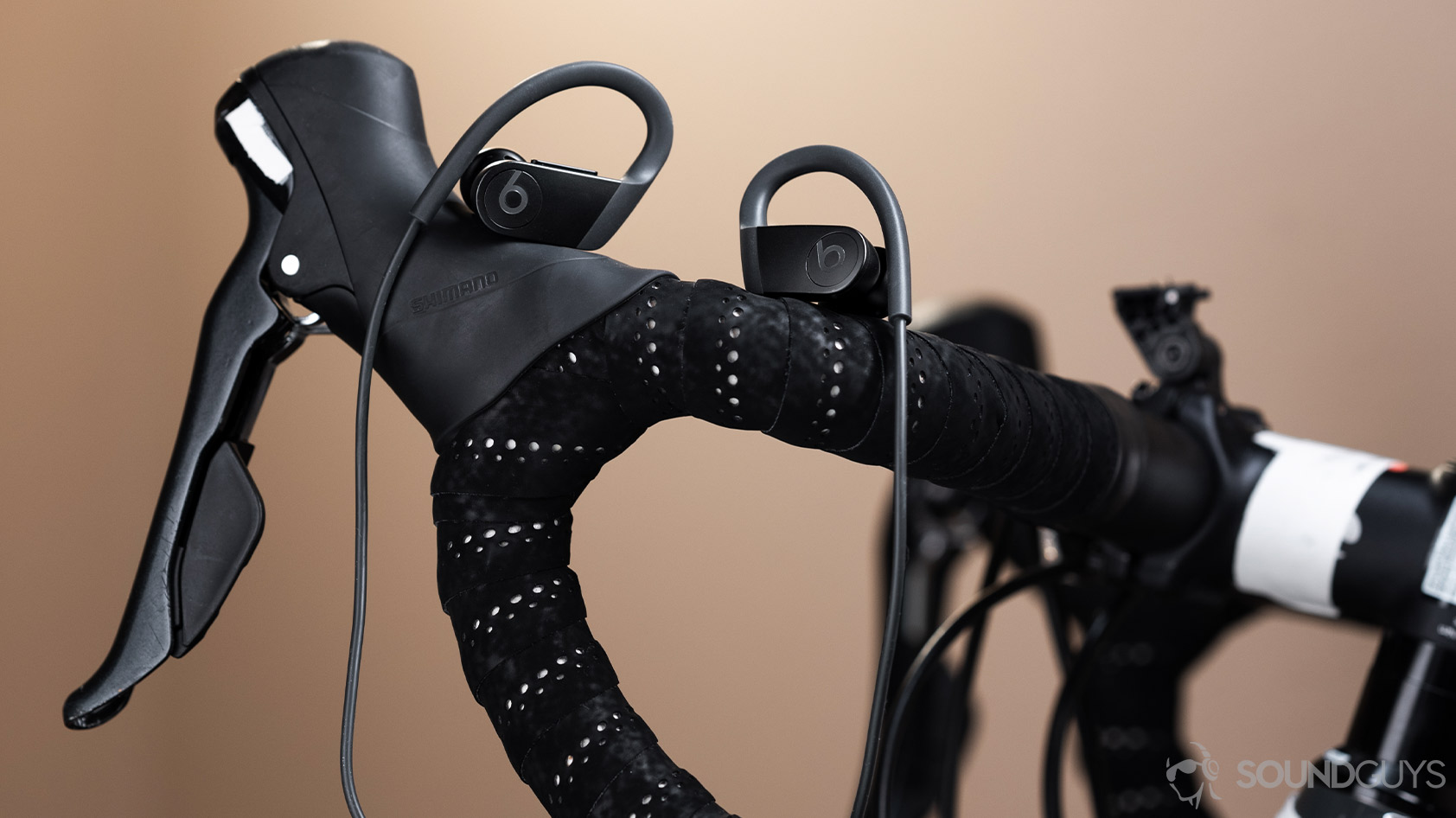
The Beats Powerbeats is the standard wireless version of the Beats Powerbeats Pro that’s now discontinued. You might be able to find it thorugh third-party sellers, though. When we contrast the Powerbeats vs the Beats Powerbeats Pro, the former compares favorably to the Pro model. Both headsets feature the latest Apple H1 chip and great battery life. If you’re crunched for cash but want the same streamlined performance provided by the Powerbeats Pro, get the Powerbeats.
What you should know about the best Beats headphones
Bluetooth codecs and AAC
Some Beats headphones come wired, but an increasing number of their products have been ditching the wire and going wireless. This means that you should be at least somewhat familiar with how they’re doing it and what that does to your sound quality. Bluetooth audio has come a long way from its early days, but it still isn’t perfect. Ditching the headphone jack means that more and more people need to rely on Bluetooth to listen to their music, and the way this works is via something called a codec.
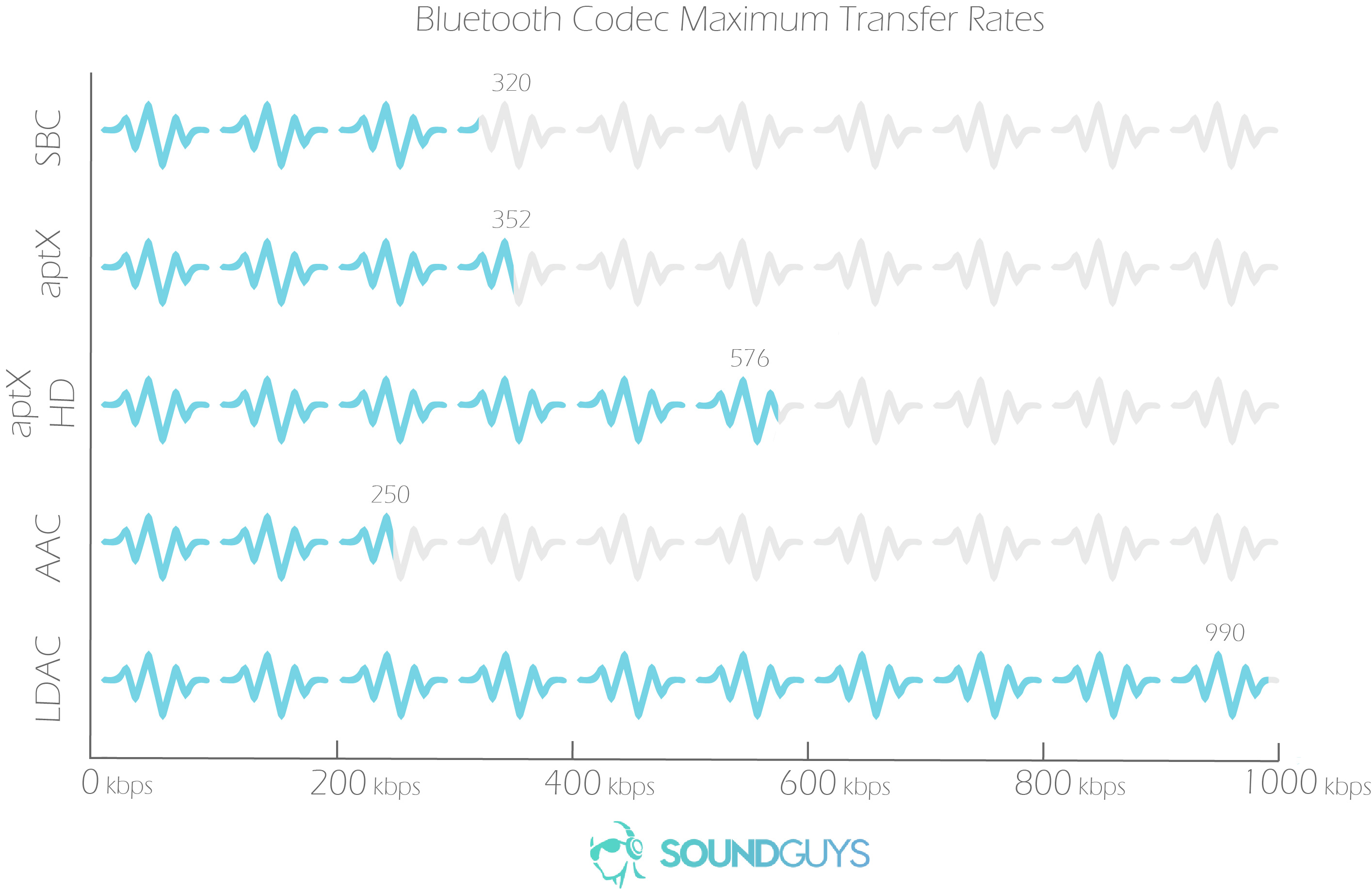
A codec is how two devices communicate with each other. Think of it like a language that needs to be spoken by one device, and understood by another. All devices speak SBC which is the most basic codec, and from there things get messy. Mainly due to the fact that different companies prefer different codecs. Sony has LDAC, Qualcomm has aptX (and soon aptX Adaptive which has the potential to be the best one so far), and companies like Apple use AAC. Since Apple owns Beats, you can see why Beats headphones only use AAC. So is it bad?
Well, AAC has a similar bitrate to MP3, which isn’t bad, but not ideal. But it does have a higher bit-depth, so you get slightly more information transferred at once even if the transfer speed is slower. That said, the codec is still years behind LDAC and aptX HD. To learn all about the different types of codecs and their pros and cons make sure to check out our full Bluetooth codecs guide, but when it comes to Beats products all you really need to know is that they only use AAC and SBC.
What’s the deal with the W1 chip?
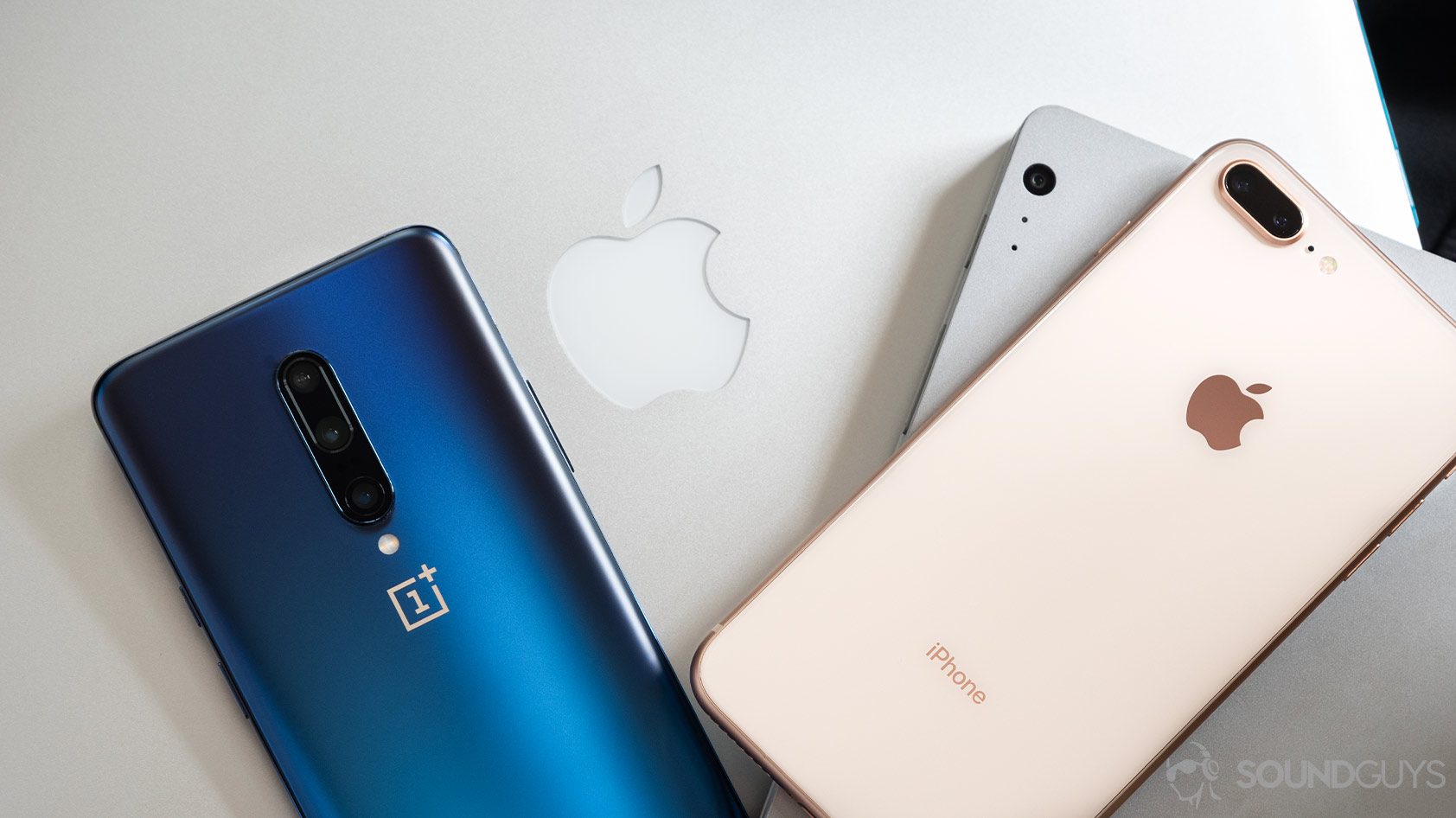
When Apple removed the headphone jack from its phones, the company announced a few Beats headphones along with it. At the time, it claimed the W1 chip was going to make Bluetooth audio easier and better for customers. Now it’s been superseded by the H1 and the H2 chips, though the latter is only available in AirPods Pro (2nd generation). While the W1 and H2 chips function nearly the same, the main difference is how the H1 allows for hands-free Siri access.
Generally speaking, if you have an iOS device then it will automatically detect that there is a pair of headphones nearby with an H1 (or H2) chip inside. A nice animation then pops up on your phone showing the headphones in question. You can connect to them with just one tap. This lets you completely bypass going through your Bluetooth settings. Sure, it’s not that big a deal, but still cool nonetheless.
The H2 chip reduces power consumption because it knows exactly how much energy the product needs. It also helps to maintain a stronger connection between the devices. So although it isn’t a game-changer, it definitely adds some functionality that gives headphones with the older W1 and current H1 (or H2) chip an edge over headphones that don’t. You also benefit from audio sharing, which allows you to pair two sets of wireless Beats headphones to the same iPhone.
Do Beats headphones work on Android?
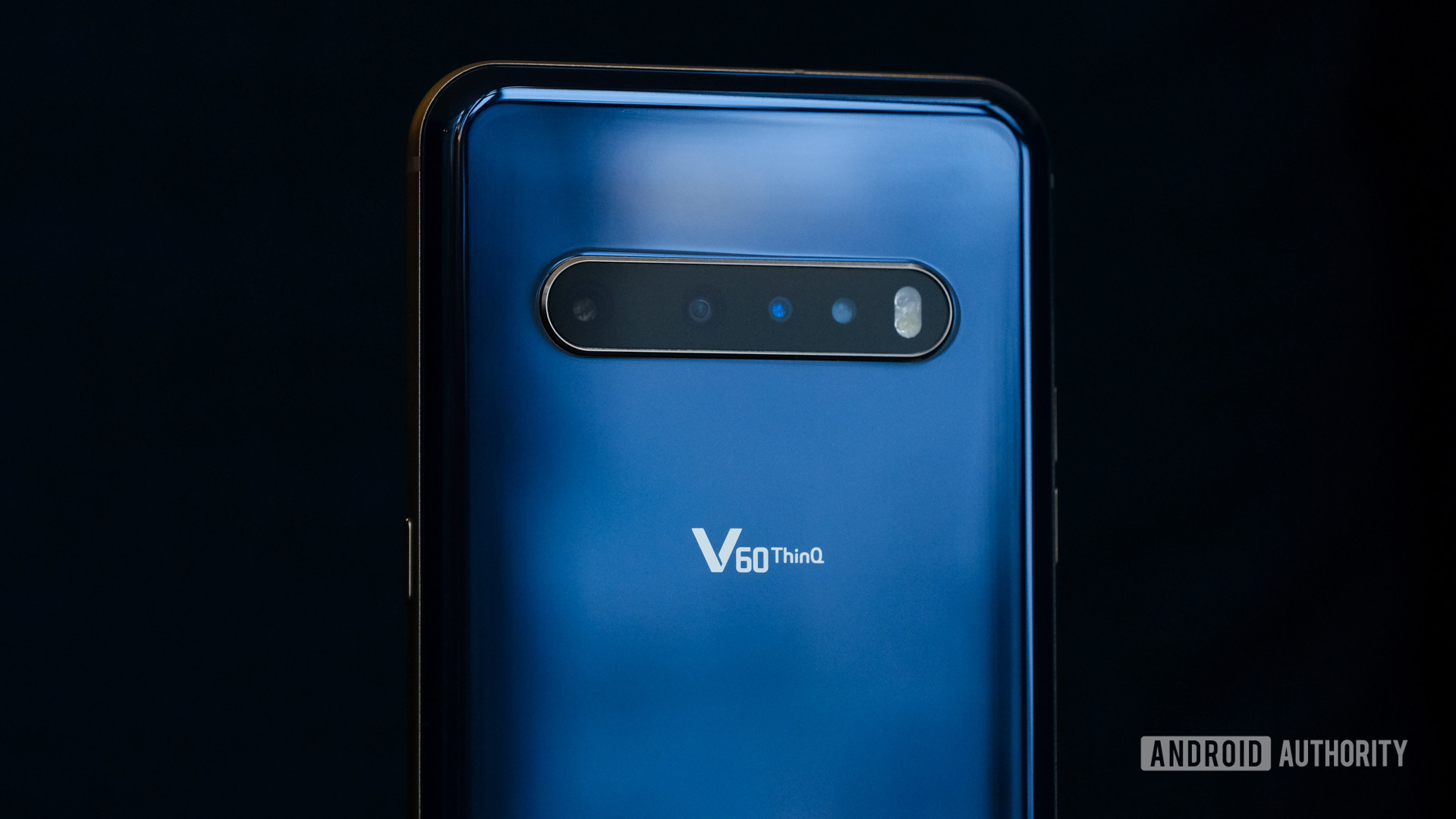
Although Beats is owned by Apple, it hasn’t left Android users out in the cold. Beats products act like any other Bluetooth headphones connected to an Android device. The Beats app for Android is also available on the Google Play store, which allows you to update your product’s software.
Living outside of Apple’s ecosystem does come with some drawbacks. For starters, you won’t benefit from the seamless pairing process provided by the H1 or W1 chip. Also, Beats headphones lack support for high-quality codecs like aptX. This means that as an Android user you’re stuck listening to music using the standard SBC audio codec.
Why is the frequency response of Beats products so different?
This is another aspect of audio where you can learn so much more by checking out our full explainer, but if you’re in a hurry here’s the gist of it.
Frequency response refers to the capabilities of the components in your Beats headphones to reproduce the signal that is being fed into it as perfectly as possible. If that’s achieved you get something called a neutral frequency response, where the output signal perfectly matches the input signal.
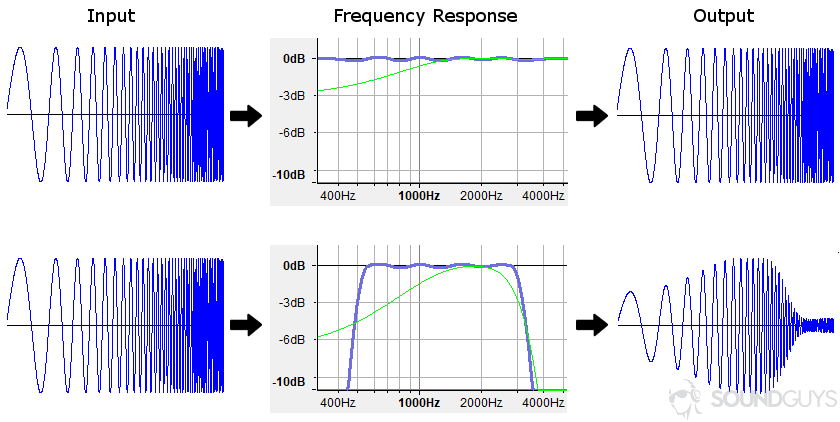
One way to picture this is to think of the game telephone we all used to play as children. If you’ve never played it goes like this: a bunch of people gets in a line and one person whispers a message into the first person’s ear. That person then whispers the same message to the next person in line, and so on, until you get to the end of the line. If everything went well, the same message should make it to the last person in line.
Now to put that into headphone terms, your source device outputs a signal to your headphones. If all of the components in your headphones are working fine then that same signal should make its way out of the drivers at the end so you can hear it.
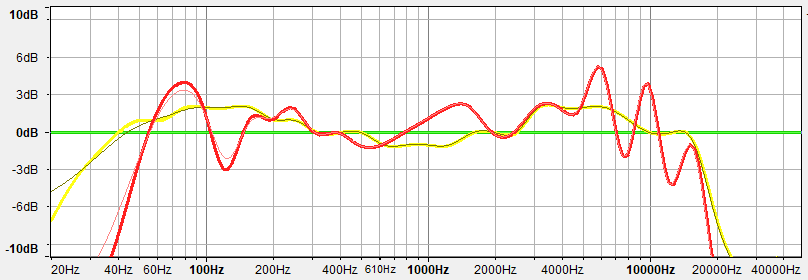
But if you’ve ever played telephone, you know that the ideal situation rarely (if ever) happens. Somewhere along the line, there’s always a part where the message gets changed. Headphone manufacturers change the signal on purpose by tweaking the components of your headphones, to make the final message (the music) that reaches your ears sound better.
Unfortunately, our ears aren’t perfect so different companies try to adjust for our lack of bat-like hearing in different ways. They might emphasize the lower notes, or take away some of the quiet the highs so it doesn’t hurt your ears, or even just raise the mids a little so you can better hear vocals. Although you’ll hear plenty of people say this is a bad thing and they want their music to sound as natural, or as close to the original message as possible, the fact is that not everyone enjoys that. Beats headphones are proof of that.
Beats headphones having an exaggerated low end isn’t a mistake in manufacturing. The frequency responses are made like that because, for better or for worse, people like it.
Isolation, active noise canceling, and you
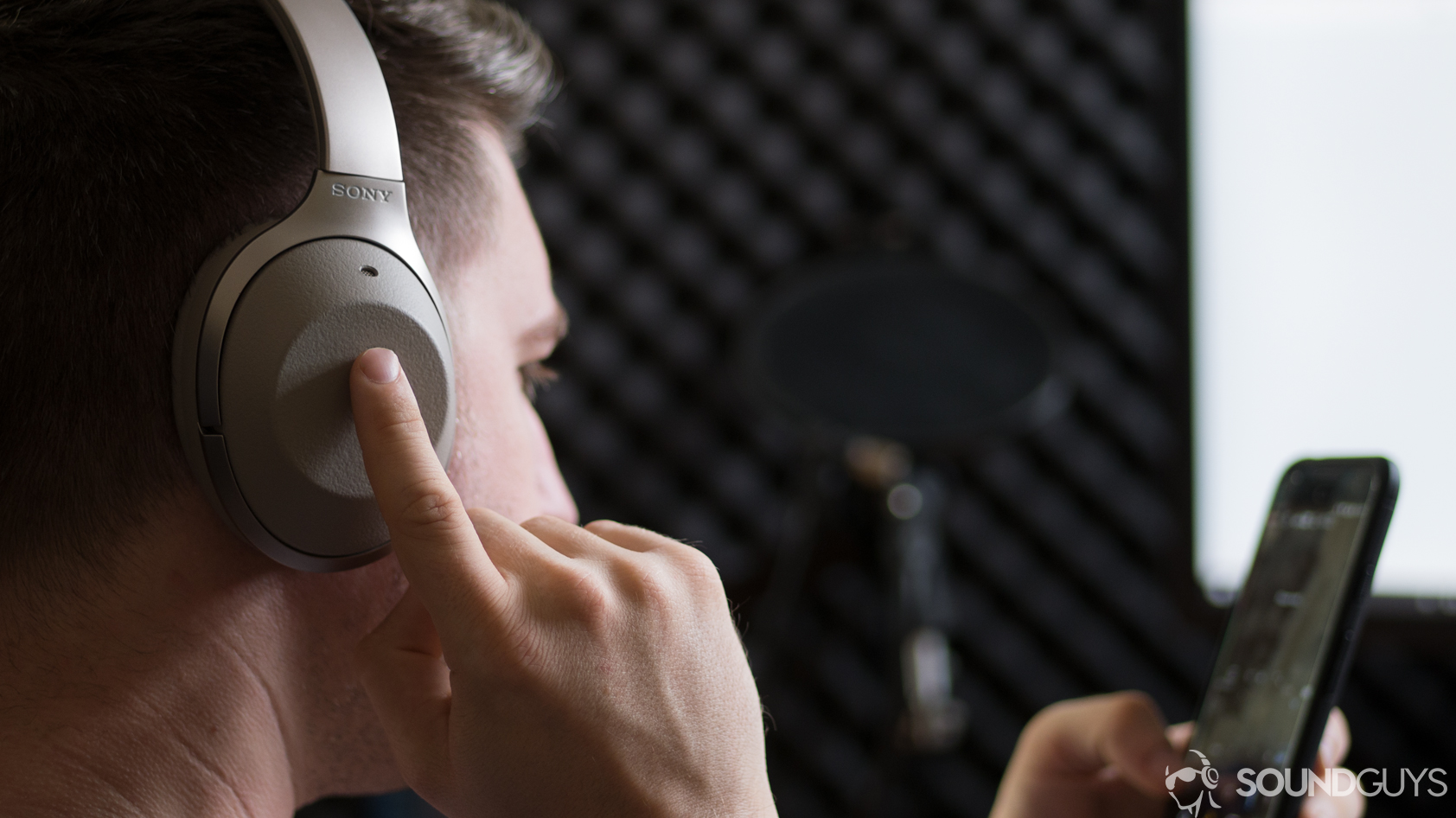
When it comes to how your music sounds, one important piece of the puzzle that often gets neglected is how well you’re isolated from outside noise. If you’re going to be in a sound-treated studio with perfect foam padding on every hard surface, then this probably isn’t too big of a deal for you. For the rest of us, outside noise is the death of good sound. This is especially true when it comes to commuters. The problem isn’t really with your headphones, it’s with human biology (you might be seeing a common theme here).
When you hear two notes that are close to each other in frequency, the brain will cancel out the lower one. This effect is called auditory masking and helped humans in terms of evolution because we were able to ignore unimportant sounds in favor of the growling of a predator, but it isn’t so great when it comes to listening to music. So if you listen to music on a train, bus, or plane fairly often, you’ll notice how the bass doesn’t sound as good as it does when you’re in the quiet of your own home. This is because those sounds are louder than the sweet, subtle basslines of your favorite songs.
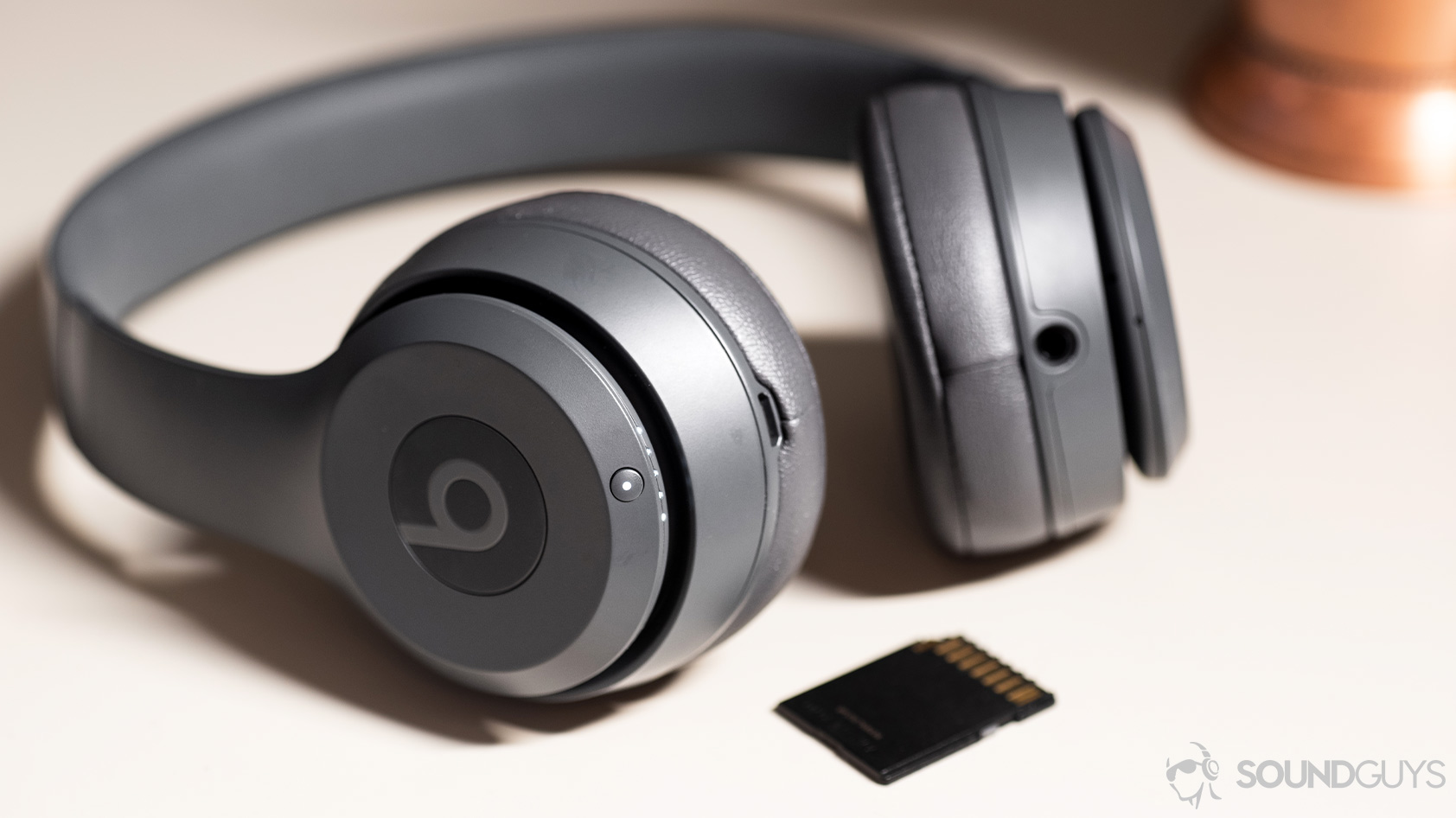
So how do you combat this effect? With headphones that physically block outside noise (and a little bit of active noise cancellation doesn’t hurt either). Over-ear headphones like the Studio3 Wireless will completely over your ears, blocking a lot of outside noise simply by being there. Then there’s active noise canceling. In this case, the headphones use tiny microphones to hear what’s going on around you and then create the opposite sound wave in order to cancel out the sound. You might remember it from Physics 101. It’s called destructive interference, and it does a pretty good job at removing some of the low, constant hums you encounter throughout the day.
Frequently asked questions about Beats headphones
In short, the Beats Studio3 Wireless are inferior to the AirPods Max in almost every regard. Apple’s latest over-ear headphones feature a sturdier build, better active noise canceling performance, and a relatively neutral-leaning sound signature. However, all these advantages come at a premium, with the AirPods Max retailing for $549 USD. On the other hand, the Beats Studio3 Wireless is available for just under $300 USD.
A good alternative to consider is the Jabra Move Style Edition. For the same price as the Beats EP, you’re getting a pair of over-ears that deliver a more accurate sound, thanks to its neutral frequency response. Plus, its premium build quality, long battery life, and 12-day standby time makes this a great choice for people who are always on-the-go.
The AirPods Pro and Beats Powerbeats Pro both sport the same IPX4 water-resistance rating, meaning that they shouldn’t break a sweat during even the most intense workouts. That being said, we’d still recommend the Beats Powerbeats Pro for gym rats, thanks to its ear-hook design that prevents the earbuds from falling out during exercise. Overall, the Powerbeats Pro is one of the best Apple AirPods Pro alternatives.
A lot of people are interested in the Beats Studio3 Wireless for its active noise canceling. If you’re looking to step outside the realm of Beats, consider the Sony WH-1000XM5—one of the best ANC headphones available today. Other alternatives include the Bose Noise Canceling Headphones 700 or the Bose QuietComfort 35 II.
Despite the name of the product, these headphones are far from studio-grade. When mixing with headphones, you’ll want a pair that has a flat frequency response that can accurately reproduce the sound of your mix. The Beats Studio3 Wireless are targeted for consumers, and therefore have a frequency response that are tuned to over-emphasize the low-end. If you’re looking for a good pair of cans for proper audio mixing, check out our list of the best studio headphones.
Once upon a time Beats were the quintessential “status item” headphones that were outperformed by nearly every set of cans out there. But, as Beats grew and matured as a company, they quietly upgraded their manufacturing and design to improve their product. Over time, they started releasing competent—if still expensive—headphones and earphones that are far better. Today, they make competitive products, and now that they’re owned by Apple, meaning they have a lot to offer for iPhone users. That said, if you’re not an iPhone user, you might want to look into Beats alternatives.
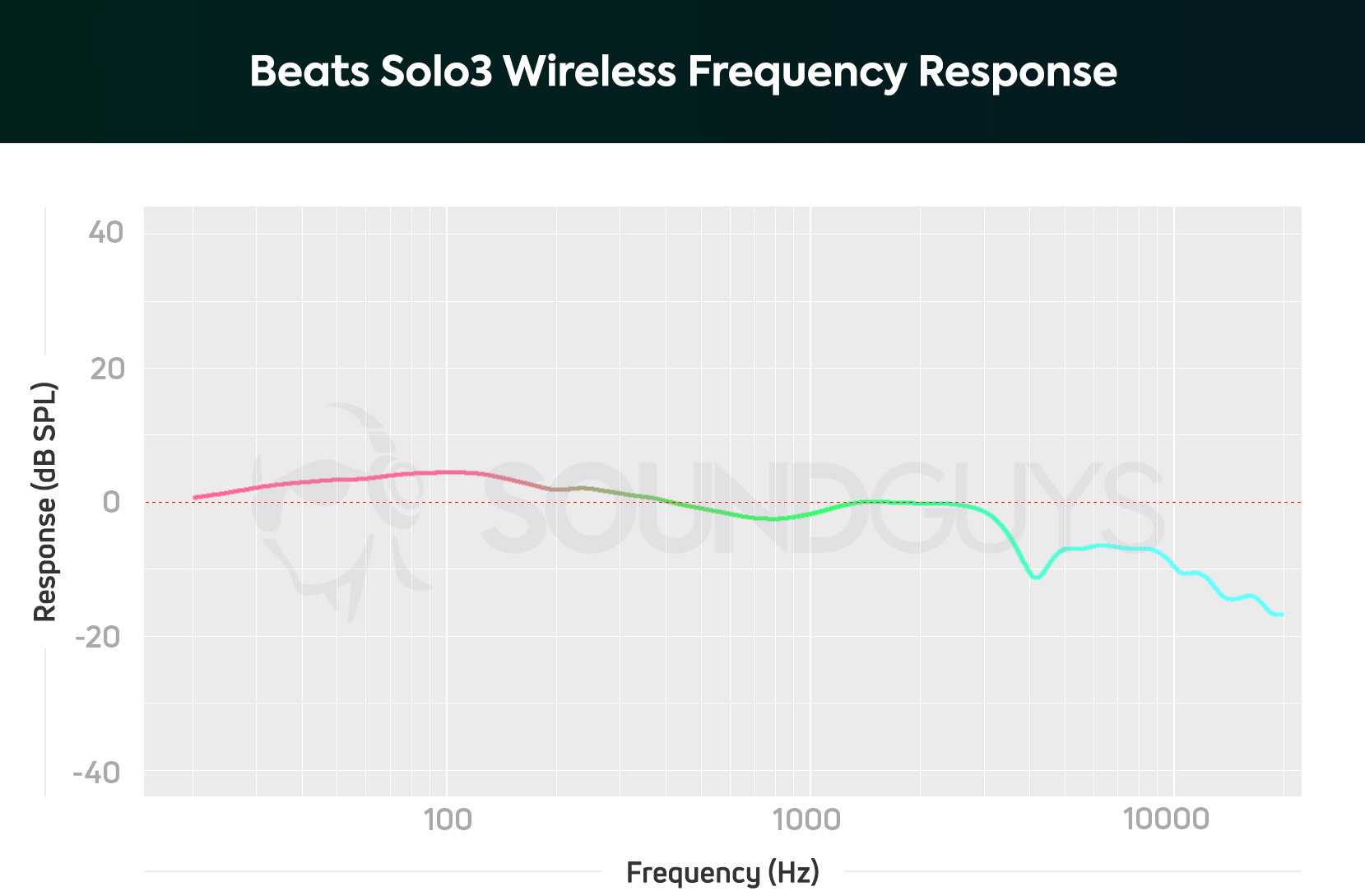
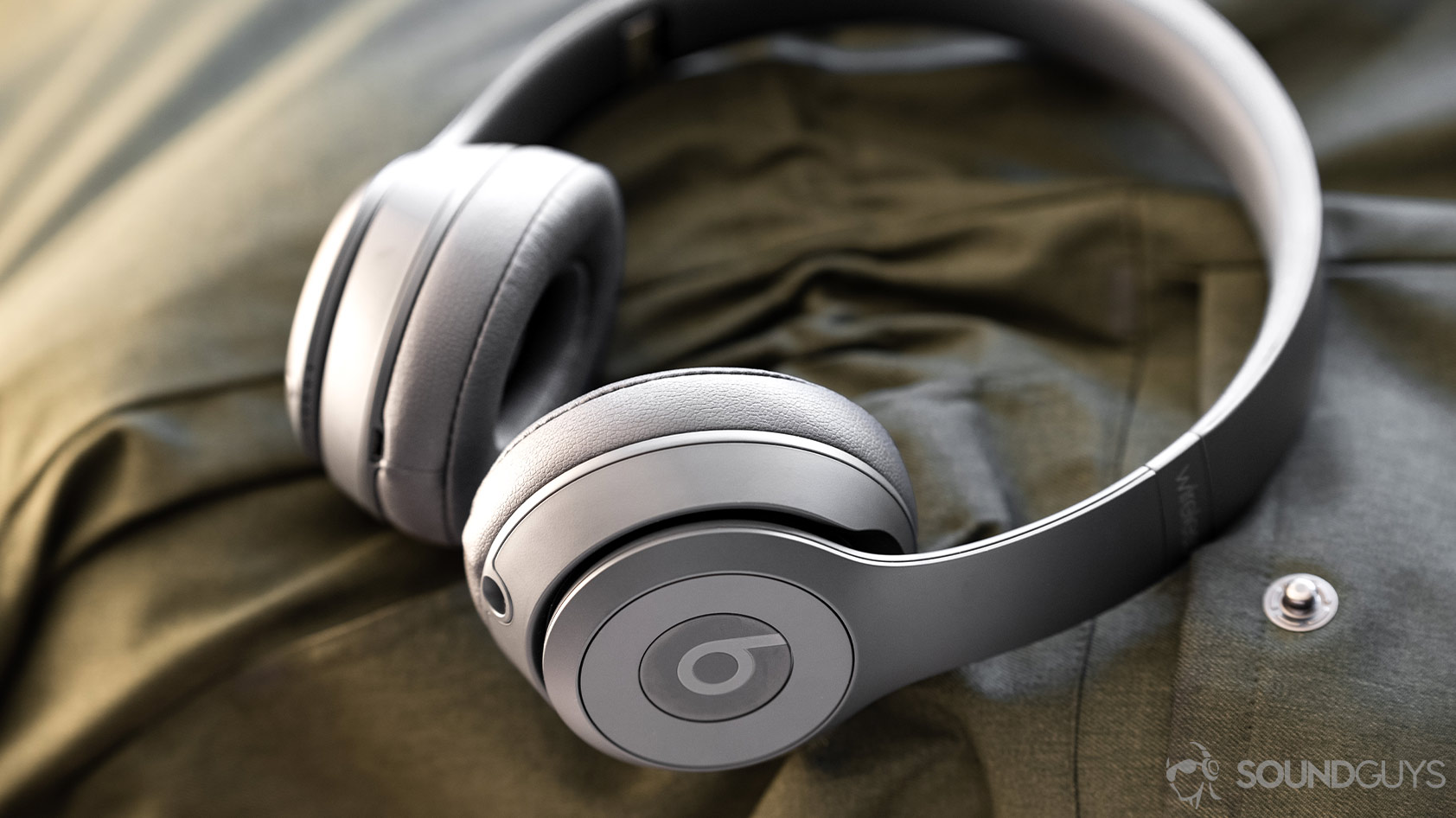
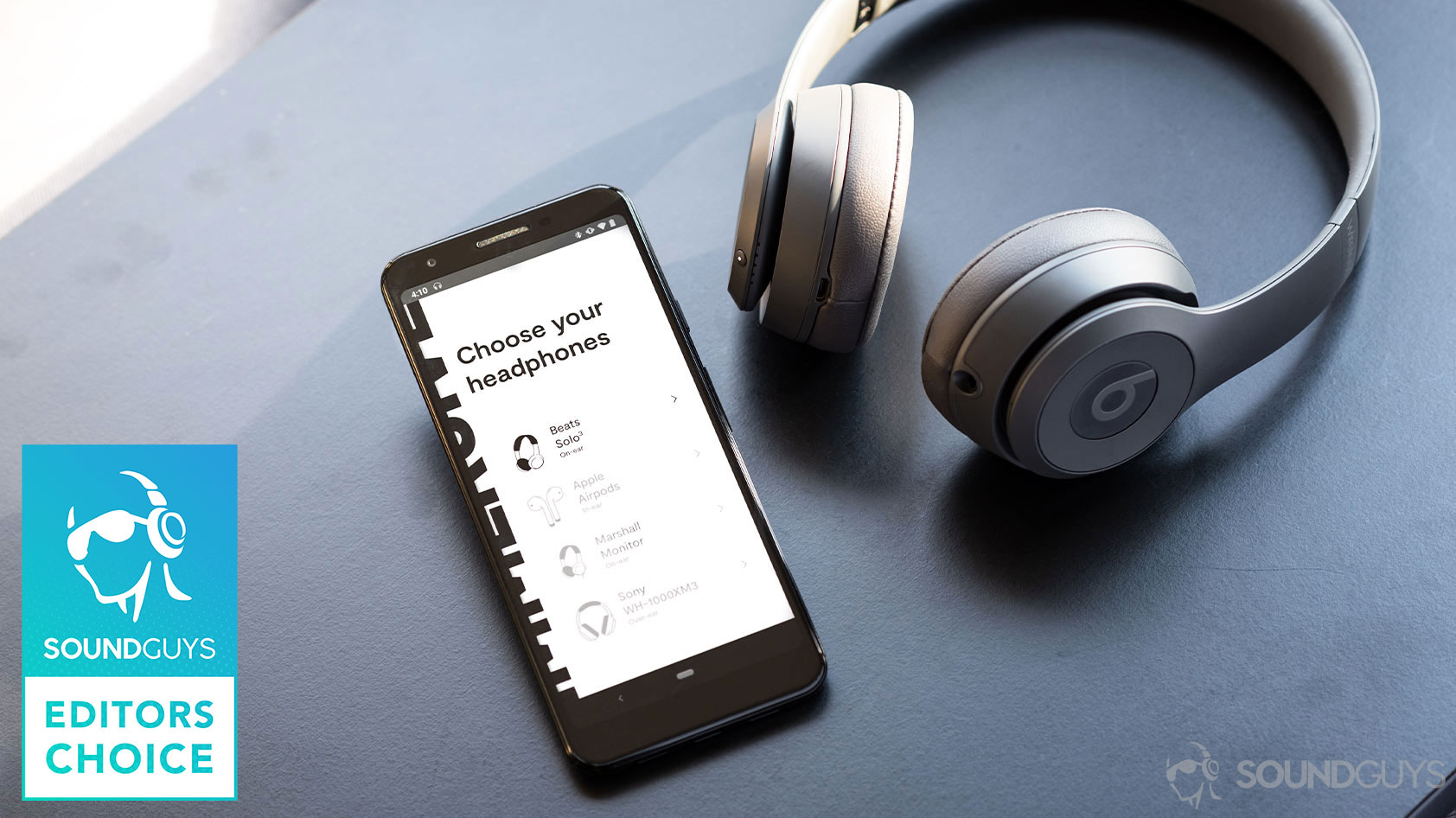
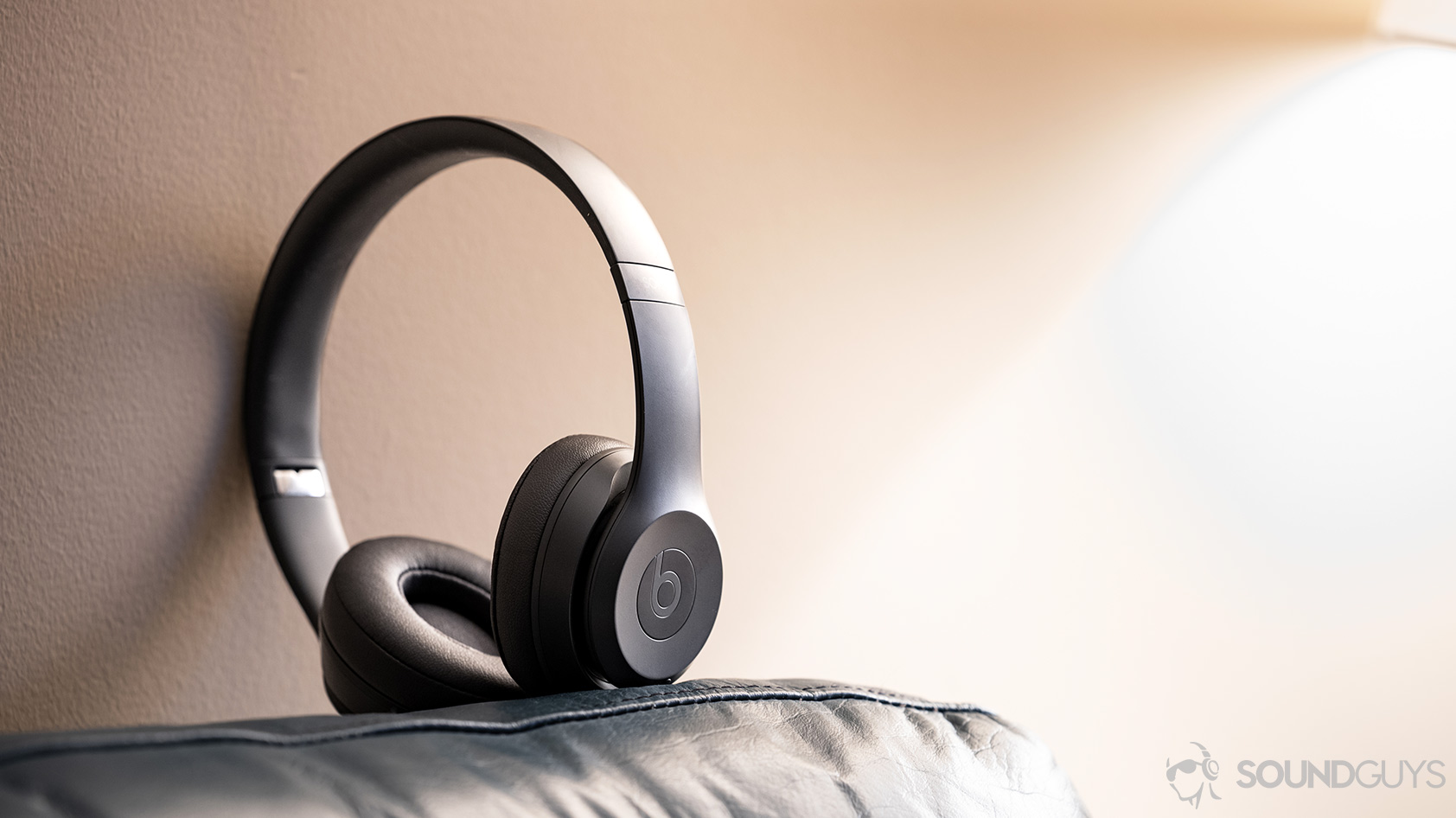
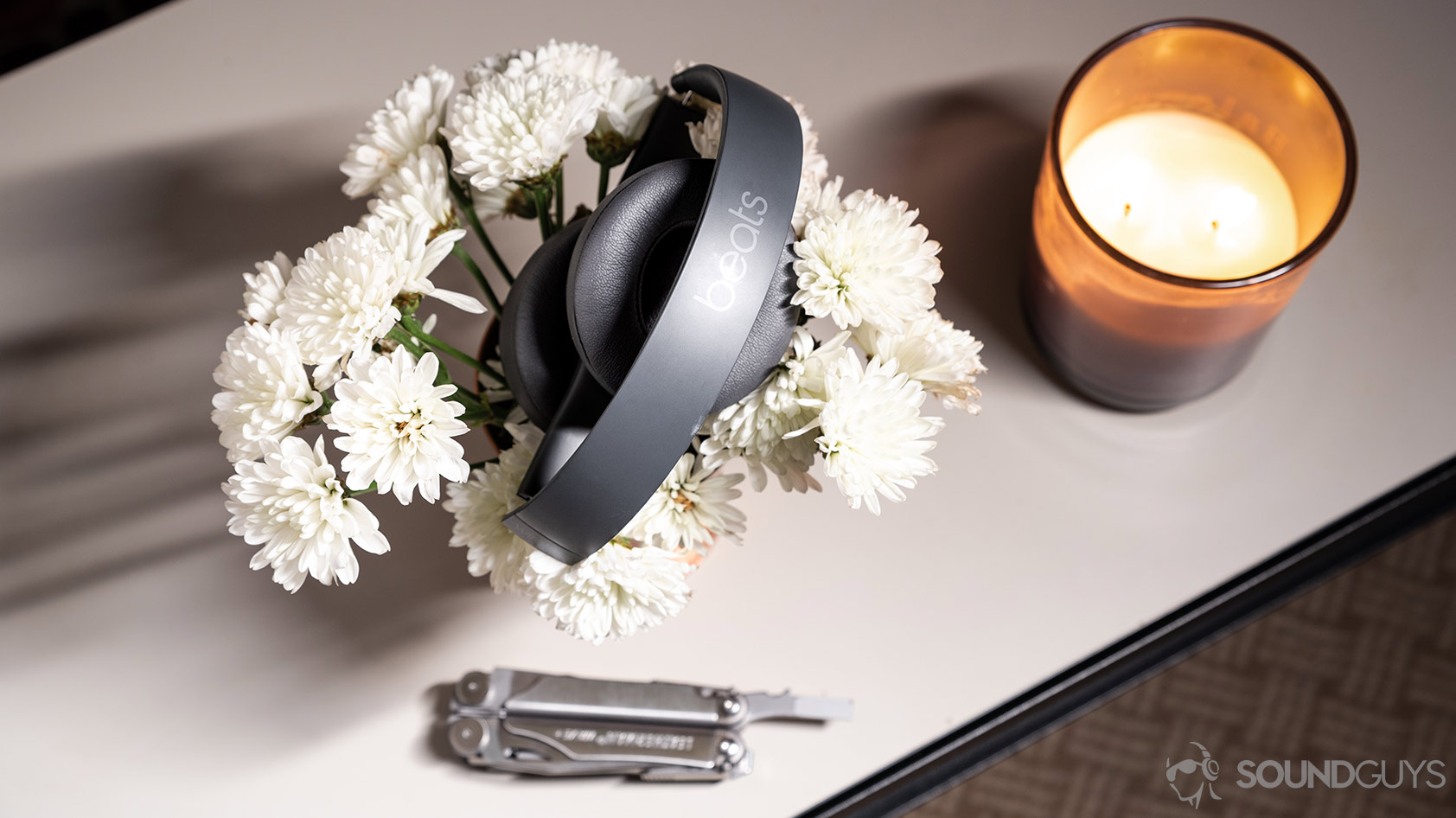
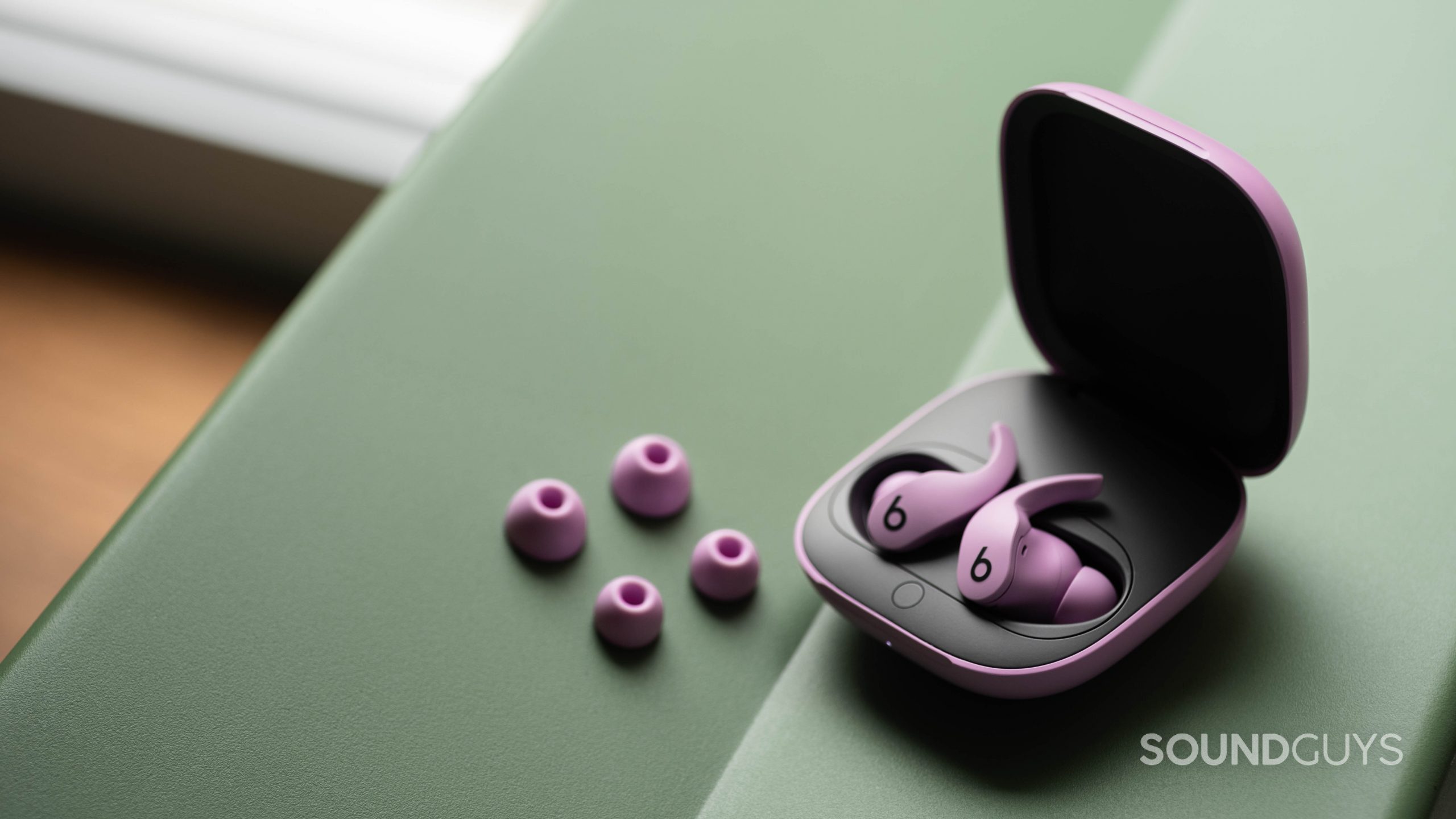
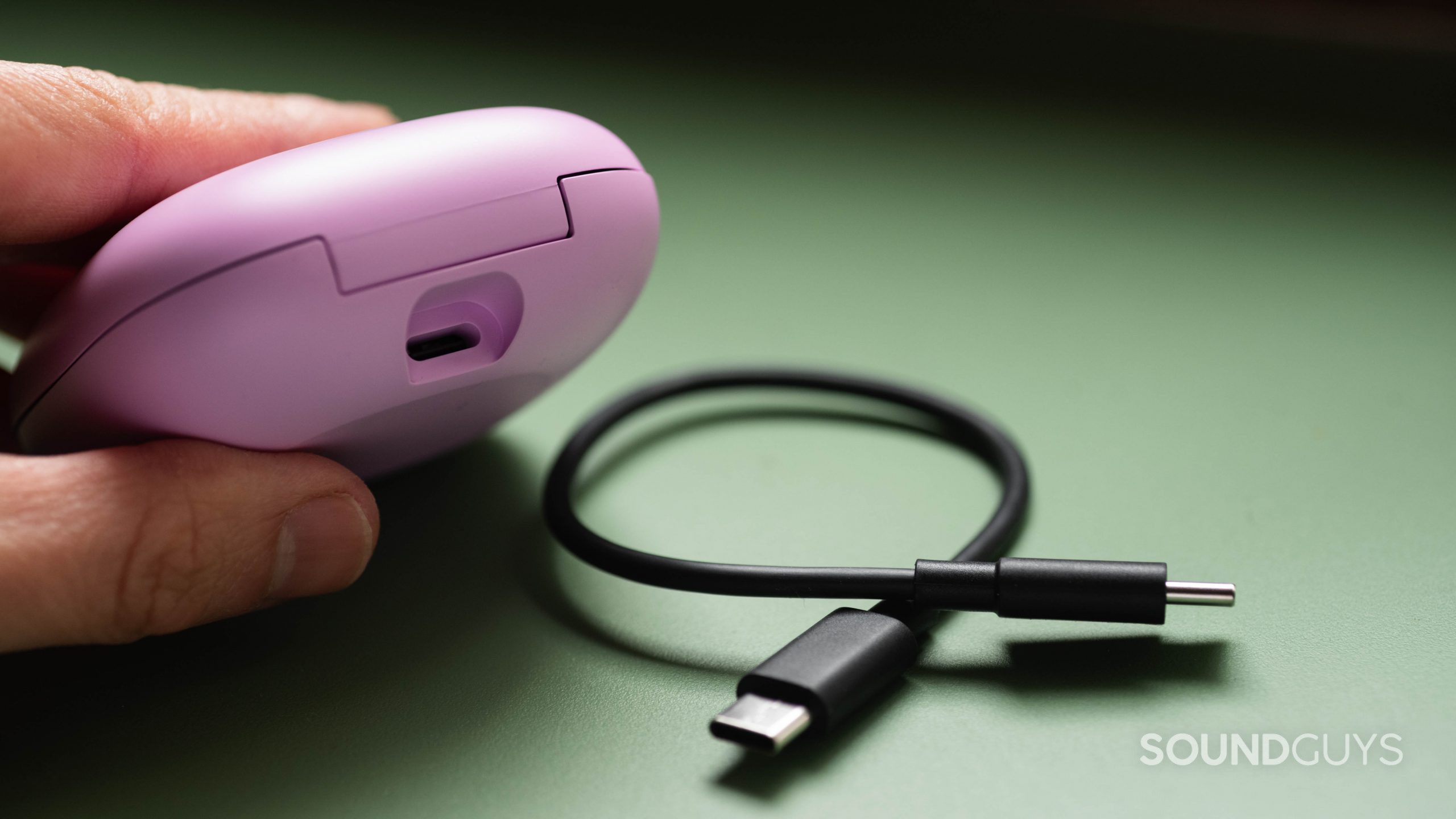
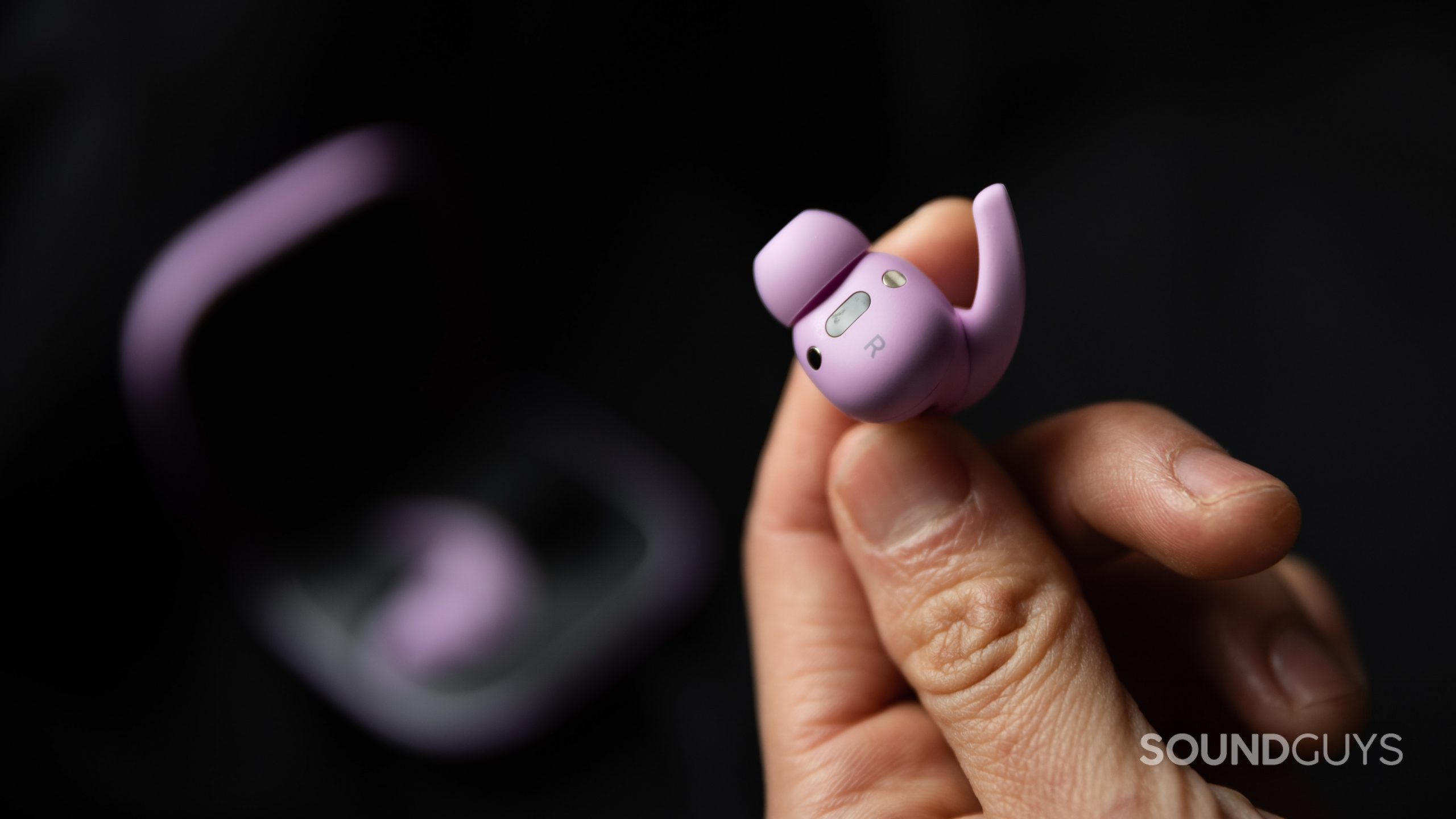
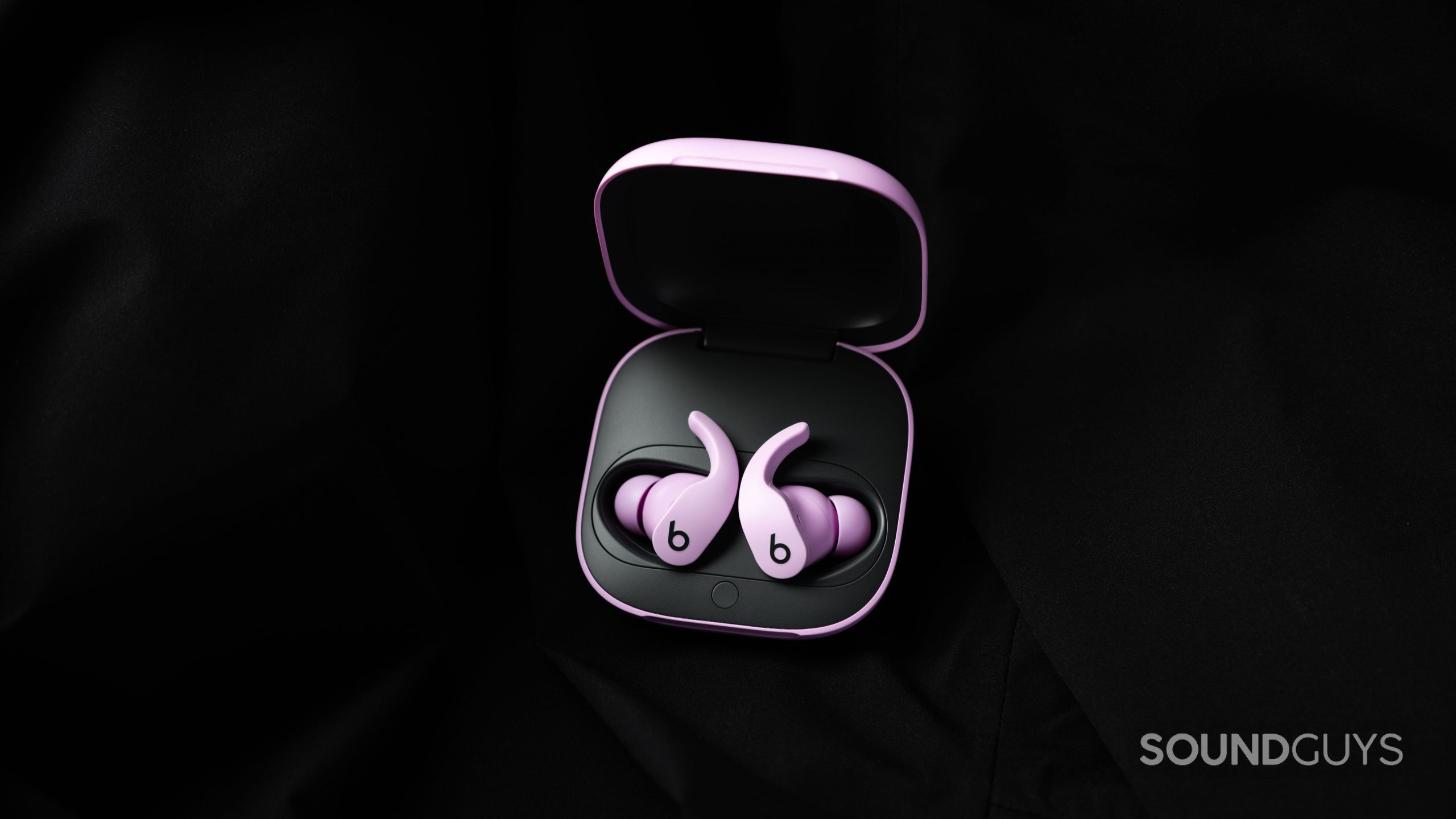
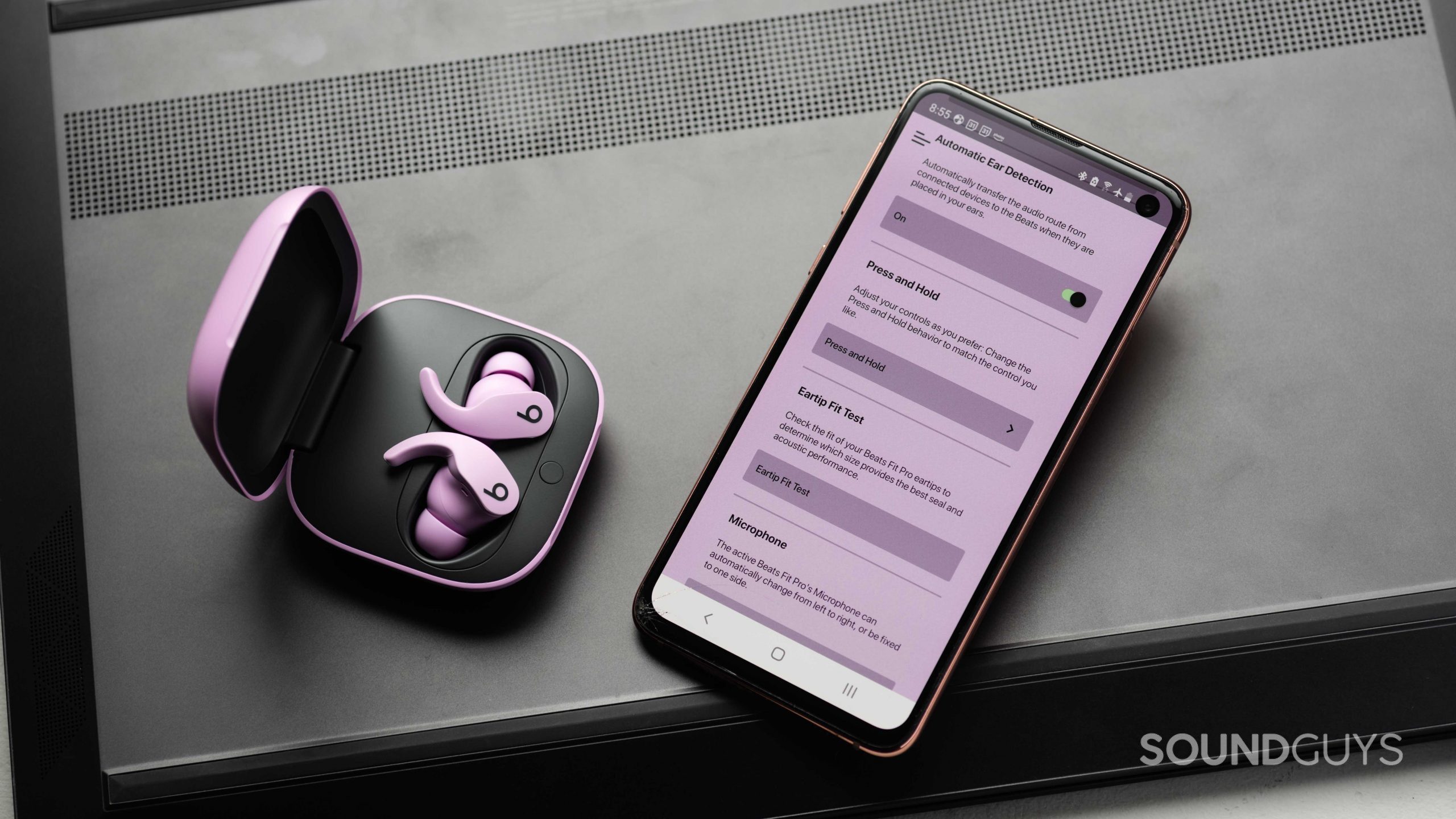
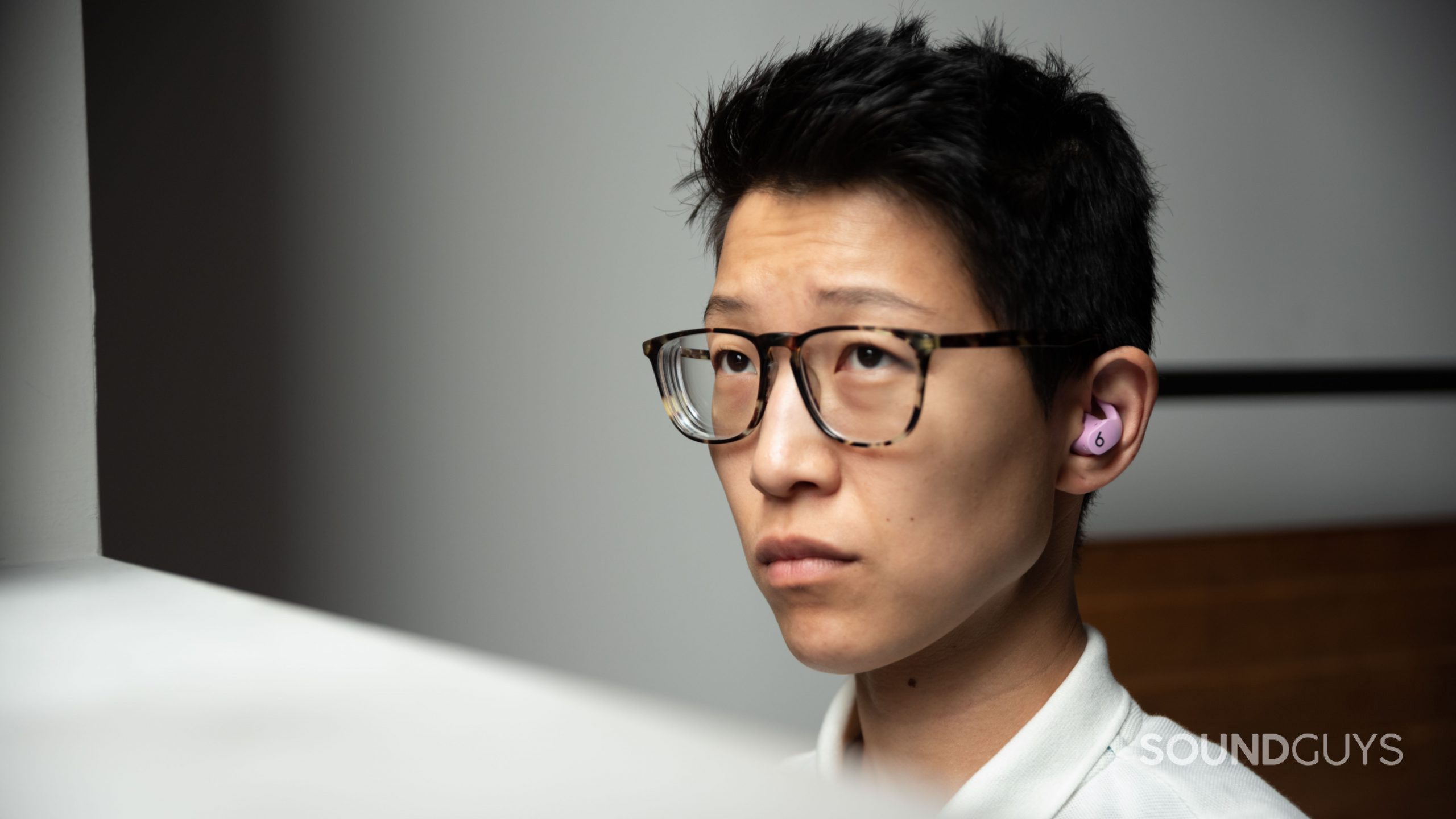
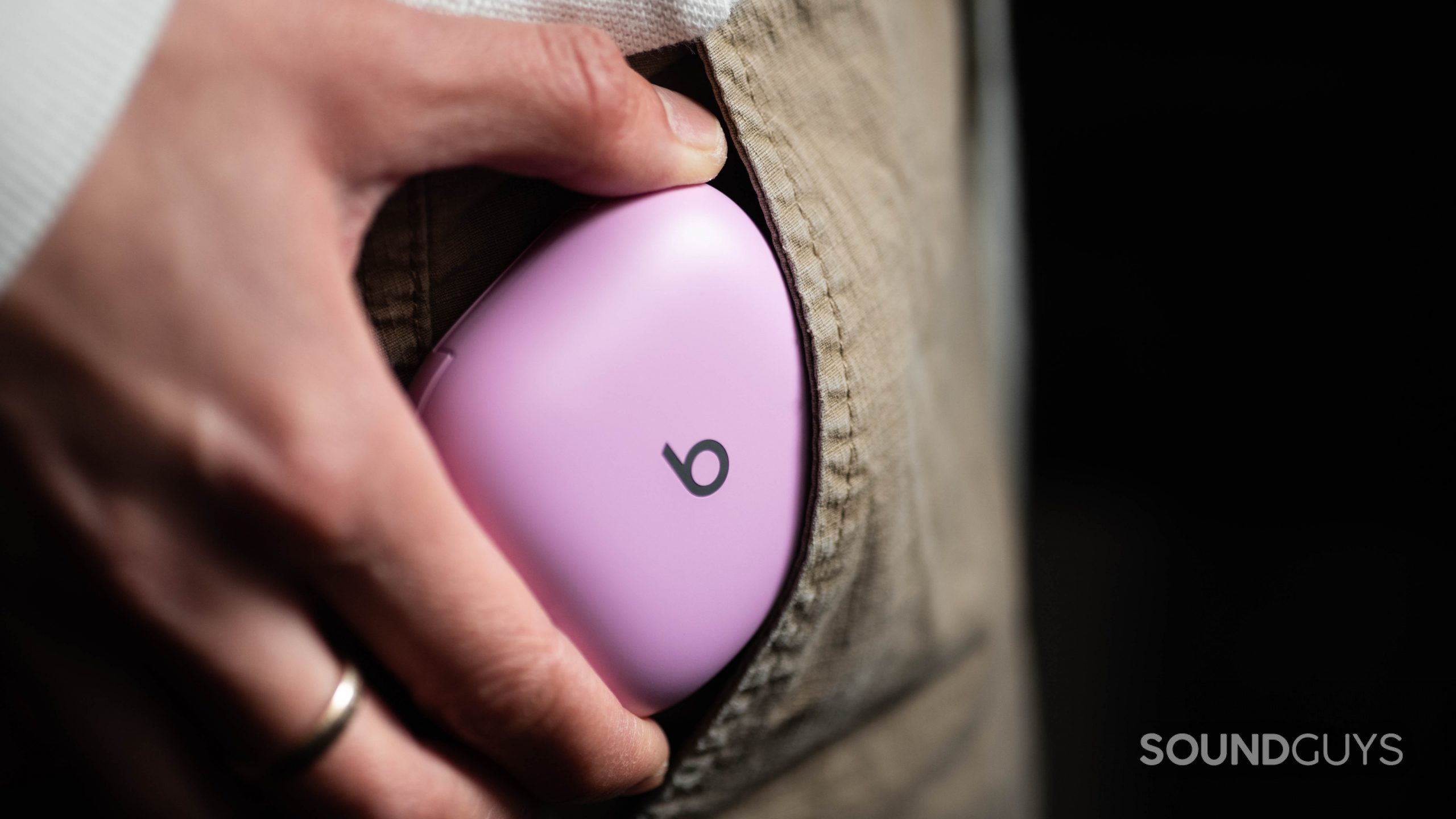
![Beats Studio3 Wireless[8] The Beats Studio3 headphones aren't the most comfortable to wear.](https://www.soundguys.com/wp-content/uploads/2018/02/Beats-Studio3-Wireless8.jpg)
![Beats Studio3 Wireless[9] If the ear cups would only rotate 90 degrees then they'd be ideal for travel.](https://www.soundguys.com/wp-content/uploads/2018/02/Beats-Studio3-Wireless9.jpg)
![Beats Studio3 Wireless[2] Ironically, the sonud quality on this headphones makes them terrible for studio use.](https://www.soundguys.com/wp-content/uploads/2018/02/Beats-Studio3-Wireless2.jpg)
![Beats Studio3 Wireless[4] Even with a matte finish the Studio3 Wireless headphones don't pick up too many fingerprints.](https://www.soundguys.com/wp-content/uploads/2018/02/Beats-Studio3-Wireless4.jpg)
